
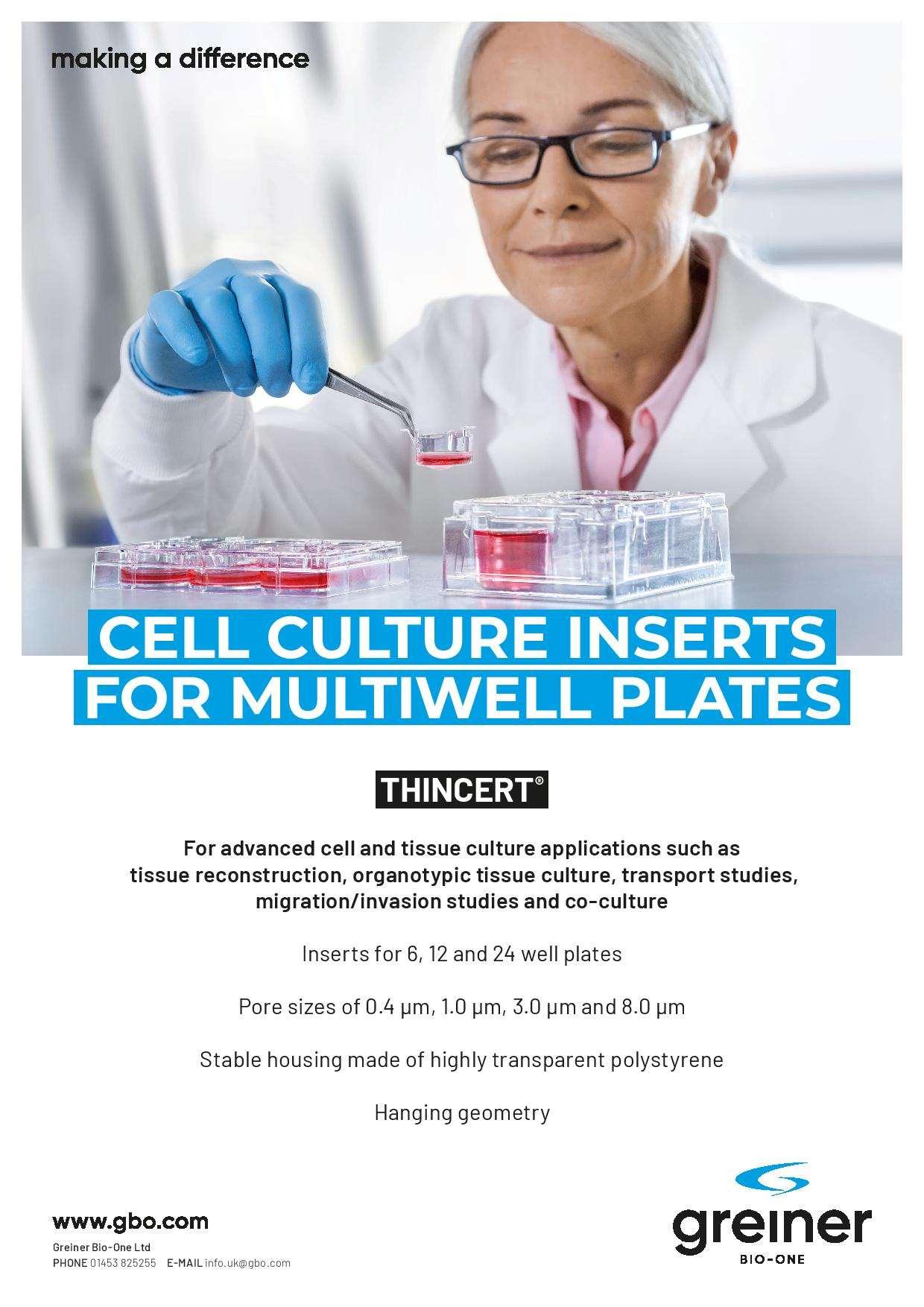
In a world of increasingly polarised views, fuelled by echo-chamber social media platforms, are we losingthe art ofa gooddebate? Not at SciencEd!From deep sea mining (p9)to robot apocalypse (p16),thereshouldbe somethingfor everyone to disagreewithinhere.



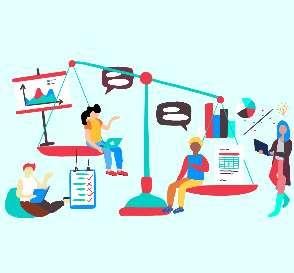
Elsewhere, we uncover the story of Eunice Foote, the female scientist who was erased from climate science history, despite being the first person to observe the heatingeffectsofcarbondioxide(p26).Wealsotakehealthrealitycheckson outdoor swimming (p22)and alcohol (p32).

As for the pig related puns, trot on to p18, where we reflect on the story of the world’s first xenotransplantation

 Harry Carstairs EditorinChief2021/2022
Harry Carstairs EditorinChief2021/2022
Inside this issue: heated discussion; heated gases; and pig-puns galore
04 Snippets from around the world of science the great debates 09 Where science intersects with politics and morality features 18 Medicine – the man with a pig’s heart 22 Sport – is outdoor swimming good for you? 26 Climate – The woman who predicted global heating 28 Physics – from falling apples to relativity and beyond 30 Marine biology – looking back at COVID’s legacy 32 Health – time to go teetotal? research 34 Antimicrobial resistance – scale of global burden revealed 36 Human Genetics – preventing the next thalidomide disaster 37 Memory formation – a new link between brain and breath 38 Palaeontology – into the jaws of the T-Rex 39 Neuroscience – how your brain tells you when to stop eating 40 Conservation – is the grass greener on the other tide? tangents 38 Puzzles and games
to listen? Check out audio versions on the EUSci Readouts Podcast
eucireka!
Prefer
Cover illustration by Yen Peng (Apple) Chew
Illustration by Isha Prabhu
Holiday snaps help scientists
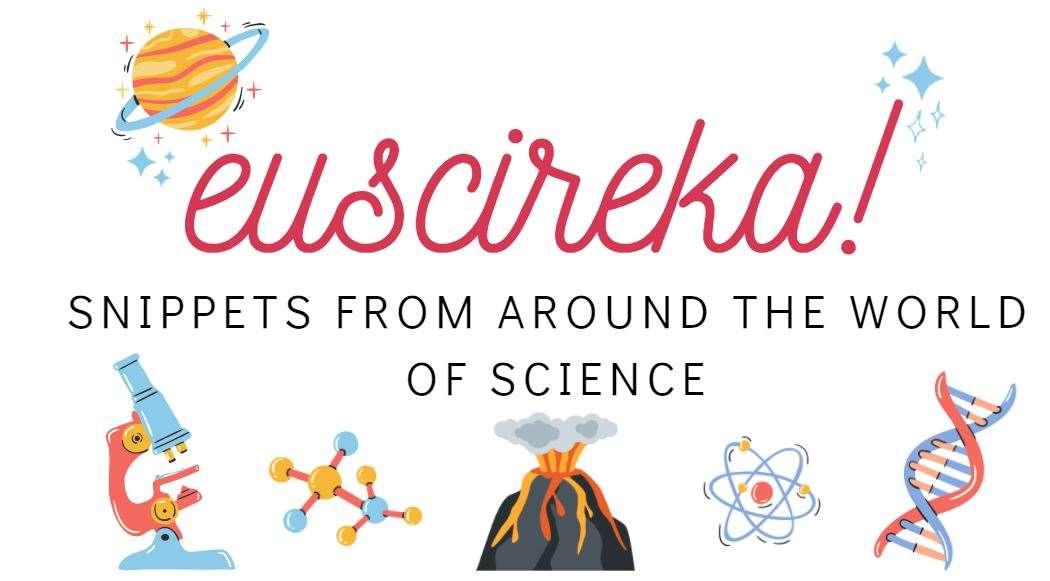
Your holiday photos may be more useful than you think! Aninnovativenewfieldistakingcitizensciencetothenext levelbymakinguseoftouristphotos.
Imageomics, as it’s called, uses artificial intelligence (AI)toanalysewildlifephotosandgaininformationonthe animals. Scientists can identify individuals, track their location and interactions with other species. This is used tomonitorendangeredspeciesandstudyevolution.
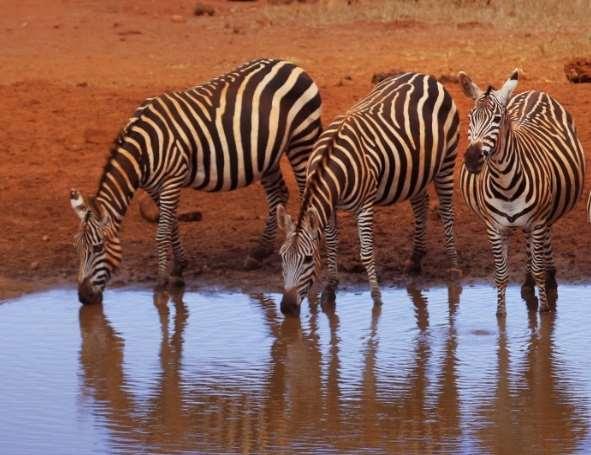
TheWildbookprojectusesthistoanalysephotosfrom public social media posts and global scientists for 53 species.It’sahugeamountofdata.“Thisisnowoneofthe primary sources of information scientists have on killer whales,” says Tanya Berger-Wolf of Ohio State University.Andtheuniversity’snewImageomicsInstitute willimproveonAImethodstogainmoreinsight.Itpicks up things that humans can’t, like differences in stripes between zebras and whether they inherit that from their parents.
Madison MacLeay
AI helps historians decipher ancient writings

A new artificial intelligence (AI) program helps historians restore ancient texts and estimate their chronologicalandgeographicalorigin.
DeepMind developers in cooperation with the Universities of Venice and Oxford, and the Athens University of Economics and Business, built Ithaca, an AI-powered solution that can fill in gaps in damagedAncientGreekinscriptions.
Studying the past relies on evidence, often fragmentaryordisplaced,asparticularlyexemplified in epigraphy – the study of inscribed texts found on durablematerialslikestoneandmetal.
Drawingonhumanfed-knowledge,Ithacadetects connections between letters and words to suggest completionsolutionsanddeterminewhereandwhen textswerecreated,augmentingandacceleratingthe workofepigraphers.
The software is available online for free. Still, users must remember that Ithaca is not meant to replacehumaneffort.Alone,itcanachieveonlya62% accuracyintextualrestoration.
AlkistiKallinikou
euscireka! 4 Autumn2022|eusci.org.uk
T(riple) – rex?
What if Tyrannosaurus rex is actually 3 distinct “sibling species”? A recent, if controversial study lead by Gregory Paul hypothesised that the variations we see in T. rex skeletons discovered acrossthelandmass ofNorth Americaconstitute T. rex , T.regina,and T.imperator speciesthatlookalike butdonotinterbreed.
Tyrannosaurus skeletons have been discovered from Mexico to Canada over a variety of climates, which makes it possible that specialised sub-species evolvedintonichesovertime.Theinterpretationof theskeletaldifferences has been previously thought to be due to the age and lifestyle of these distinct dinosaurs. Critics highlight that the study uses public and private fossil collections as part of its conclusions,whichmakesthedatahardertoverify.

The authors of this study nevertheless hold up theirworkassignifyingthestartofare-examination
Christian Donohue
Coffee climate trouble ahead
Climatechangewillsignificantlyaffectwhereintheworld crops such as coffee can be grown, according to a recent study.
Notonlyiscoffeesomethingwe’velearnttodependon in the west, it also forms the livelihoods of many smallholderfarmersaroundtheglobe.
ScientistsinZurich,ledbyDrRomanGrüter,haveused computationalmodelstopredictfutureclimateimpactson coffee, avocado, and cashew production. They found that coffeewouldbetheworstaffectedby climatechangewith thebestcoffeegrowingareasdecreasing50%by2050.
Cashew and avocado production, meanwhile, might actuallyseesomeimprovement.However,thiswillrelyon farmers globally adapting with the information provided bycomputationalmodels.
The work being done by scientists such as Grüter allows the selection of crops and farming approaches to improve resilience to climate change. In the meantime, remembernottotakeyourcoffeeforgranted!
 Ellie Dempsey
Ellie Dempsey
De-extinction unlikely prospect, rat study shows
AninvestigationoftheextinctChristmasIslandrathasshownthatde-extinctionmaybemoredifficultthanpreviously thought. In a collaboration between the Universities of Shantou and Copenhagen, Jianqing Lin and colleagues resequenced the rat’s DNA over 60 times and mapped it to a known “reference genome”, but found that approximately 5%oftherat’sgenomewasmissing.
Many of themissing genes arethought to play vital roles in therat’s immunesystem and senseofsmell,and it is oftenthesesmallchangesthatareimportantfordifferentiatingbetweenclosely-relatedspeciessuchasthe(non-extinct) Norwaybrownratthatwasusedasareference.
TheChristmasIslandratisarecentextinctionwitheasilyobtainedgeneticmaterial.Ifde-extinctionispotentially impossiblefortherat,thenthiscastsdoubtontomoreambitiousde-extinctionprojectsthatarecurrentlyinprogress, suchasthewoollymammothorsabretoothtiger.

euscireka! Autumn2022|eusci.org.uk 5
Jacob Smith
Can we be taught to be happy?
Scientists at the University of Bristol have shown that their Science of Happiness course was effective at protectingstudents’wellbeingwhentaughtremotelyduringtheCovid-19pandemic.

The course included two hours of online sessions weekly for 11 weeks and fulfillment of a journal with prompts relating to gratitude and optimism. The wellbeing of the students’ levels of happiness and anxiety were self-reported before,during,andafterthestudy.
Thiscoursehadalreadybeenshownto increasestudentwellbeingwhentaughtin person. However, this study shows that this positive effect occurs even when the coursesaretaughtcompletelyonline.
This study was especially interesting becauseittookplaceduringthepandemic when the control group reported decreased wellbeing. The students who took part in these lessons appear to be protected from these negative effects of thepandemictotheirwellbeing.
Hubblesetsrecordfor most distant star
The Hubble Space Telescope has broken its own record of observing the most distantstareverseen.NamedEarendelor “morning star”, its light took12.9 billion years to reach us – about 94% of the age oftheUniverse.

InastudyledbyBrianWelchofJohns Hopkins University and published in Nature, the distant star was imaged by employing gravitational lensing. This phenomenon arises when an object is so massive it bends space and thus the path of light, magnifying objects that lie behind it. The alignment was just right for Earendel, which was strongly magnifiedbyagalaxycluster.
Studying the details of Earendel’s evolution and composition is sure to provide astronomers with valuable insights into the beginnings of the Universe. Mr Welch’s team has already secured observation time on the newly launched James Webb Space Telescope, duetostartoperatinginsummer2022.
TanjaHolc
euscireka! 6 Autumn2022|eusci.org.uk
Imagecredit:NASA
Louisa Drake
Escaping Magpies
A group of Australian scientists developed a new wireless bird tracker and tracking harness,specificallydesignedtobedifficultto take off. But when they tried their new trackers on some magpies, things did not go as planned. Immediately, one magpie began helpinganothertogetridoftheirtracker,and within hours, the magpies had removed most of the trackers off each other. While the researchers could not tell whether one particularly intelligent magpie was breaking everyone free or whether they shared duties, theirwillingnesstohelpeachotherandaccept helpshowsonceagainhowsmartmagpiesare!

Sentient Octopuses
A Spanish seafood company announced plans to open the first commercial octopus farm in 2023 –onlythreemonthsafterresearchersconcludedthat octopusesweresentient.Theirreviewdefinedthat asentientbeingshouldbecapableofexperiencing both happiness and distress. Another criterion is that the animals are able to learn and associate differentthingstogether,for exampleseekingout relief when in pain. But many animal protection laws don’t currently include octopuses, so the Spanishoctopusfarmissettogoahead.
Self-conscious rats
Do you remember that feeling in an exam when youknowyou’rewaybehindtime?Ratsmightdo too. Researchers recently tested whether rats could be aware of their own mistakes in a simple task. First, the rats were trained to press a lever for exactly 3.2 seconds. In a second stage, they were fed from one of two feeders, depending on whetherthey pressedalever forthecorrecttime ornot.Afterawhile,theratswereabletopredict whethertheywouldgetfedfromthe3.2-secondsfeeder or from the feeder of mistakes. The researcherswerestunned–theirratswereableto tell if they had made a mistake in their task. Knowledgelikethiscan help usaddressourown mistakes, for example figuring out how our own self-reflectionandtime-keepingskillsdeveloped.

Magpies”, “Sentient Octopuses”, and“Self-conscious

euscireka! Autumn2022|eusci.org.uk 7
“Escaping
Rats” written and illustratedby Marie-Louise Wohrle









There is time to save the seas from our thoughtless extractivism
Your smartphone, as well as renewableenergyfromwindturbines and solar panels, relies on minerals likecobalt,nickel,andlithium.Asthe worldgobblesuptheseresourcesever faster, mining companies are looking tothedeepseaforaquick solutionto depleting terrestrial resources. In September 2021, the European Commission announced plans to step up deep-sea mining extraction, despite an overwhelming vote by governments in favour of a moratorium on the operations. This destructive operation is unnecessary and must be stopped before it spells yetanotherenvironmentaldisaster.
Sediment plumes are one the biggest risks to marine life: these plumes would be created by the dredging of the sea floor in mining, and their resettling can cause dramaticchangesinlocalecosystems. “The severity and spatial scales of plumes remains a controversial issue, with environmentalists fearing plumes could travel hundreds of kilometres and mining companies anticipating the impact to extend no further than 10 km from the mining site,”statesadocumentwrittenbythe International Union for the ConservationofNature.
No extensive studies on the potentialecologicaldamagehavebeen conductedyet.Thatmeansthatthere could be completely unprecedented damage to deep-sea ecosystems, potentially ridding the planet of rare species. One such species – the scaly foot snail, found on vent sites along the Indian Ocean ridges – was recently classified as endangered becauseofthethreatofseabedmining inthearea. As someone hoping to go into a career in marine biology, I cannot face the idea of species being lost before I get a chance to study themorevenknowoftheirexistence, but I have full faith that there is still timetosavethem.
So, what can be done to prevent deep-sea mining from becoming a greaterreality?Onethingistoinvest
in battery innovation. “Battery technology has advanced rapidly. Investmentininnovationmeansthat the next generation of longer-lived batteriesthatreusemetals–ordonot use deep-sea minerals at all – are alreadyenteringthemarket,”writesa memberoftheDeepSeaConservation Coalition. With newer, less environmentally invasive technologies already on the market, why do we need to resort to older, more environmentally destructive methods?

Thehigh costsof deep sea mining should also be diverted towards recycling. Reclaiming one tonne of lithiumfromrecycledlithium sources costs approximately $28,000. According to estimates from the Massachusetts Institute of Technology,justsettingupadeep-sea minecancostover$1bn.Thinkabout how much recycled lithium could be recoveredwiththat!
We also need more wide-scale electronic recycling programs in communities. Being able to retrieve thesemineralsbeforetheygotowaste sites or landfills will reduce the need to mine. With websites such as recycleyourelectricals.org.uk you can find your local drop-off point. The facilities are already here and accessible – all it needs is a little promotion.
Repurposing and reusing your old electronics is without a doubt the easiest way to make a personal difference. Every house has that drawerfilledwitholdphones,expired currency, and old takeaway menus. If everyonecontributedtotherecycling system by sending in their old electronic waste, there would be greater amounts in circulation to recycle. The European Union has created regulations to reduce the amounts of minerals in new batteries from2030.
Lawmakersneedtodotheirpartto stop deep-sea mining from being undertaken on large, ecologically destructive scales. A moratorium on deep-sea mining needs to be in place, at least until there are clearer environmental impacts. The European Commission plans announced in September are a roadblock to this. With most governments overwhelmingly in favour of delaying or stopping deepsea mining on all scales, the enthusiasm is clearly present. The biggest challenge will be convincing worldleadersofthefinancialpositives to investing in, instead of ruining, undiscoveredanduniqueecosystems.
Watson (she/her)is a fourth-year history student. (On allsocialmedia: @lara_bethan)
the great debates Autumn2022|eusci.org.uk 9
Lara
Lara Watson investigates howour continual reliance on mining for mineral resources couldhave a devastating impact on the environment and what we can and should doto help prevent further deep-sea mining.
This is the onlywayto save our naturalworld
Rights of
Imagineaworldwherenatureitselfis apoliticalactorrecognisedinlaw.In this world, deforestation would be genocide, and the use of bee-killing pesticides a hate crime. It may seem like a radical approach to environmental law, but charging 5p foraplasticbagclearlyisn’tgoingto stop us from hurtling towards an irreversible increase in global temperature.
When you break down what it meanstobehuman,thewayinwhich humans exploit the natural world is truly questionable. Once it was tool use that made us unique, then crows and chimpanzees proved us wrong. Even down to the response of plants to light and gravity, another side to the previously unconscious plant kingdom has been revealed. The narcissism many humans in “the West” exhibit when putting organisms in arbitrary hierarchical boxes is fickle and used only to reassure ourselves that killing such diverse and intricate beings is justifiable.
We are treating the environment as ifitgivesnothinginreturn, when in fact we are the parasites that are sucking thelife out ofthevery thing that sustains us. Bring yourself back to the lockdown of 2020. The thing that kept many of us going wereour dailywalksinnature:peoplerisked

fines just to get a whiff of fresh air. Surely something that provides us withsuchjoyandneverfailstoboost ourmentalhealthshouldbeprotected in law and valued as much as our therapists?
Ifailtobelieveanyonecanstandin the shadow of Arthur’s Seat and still think this life-sustaining dormant volcano is any less precious than a human.Itmayjustseemlikeamassof rockbutithasbeenonthisplanet344 million years longer than humans have and watched us build a city around it. Something that special surelyshouldhavethesamerightswe do?
Thenotionofsuchnaturalbeauties beingaliveisnotanewone.Insome NativeAmericanreligionseverything fromarocktoabuffaloispartofthe Great Spirit, and I think many other humans need to learn from this philosophy. Breaking down the humanegoisvitaltosavetheplanet, and I can’t think of a better way to demonstrate this than by putting everything and everyone on this planetasequalsinthelaw.
The practical implications of nature having the same rights as humansisquestionablewhennoteven allhumanshaveaccesstotheirrights. However, I’d like to draw on the example of Aotearoa granting personhoodtotheWhanganuiriver
in 2017, a campaign led by the indigenous Māori people to protect their environment. The river is now being protected by law against harmfulfertiliserrun-offanditcannot be redirected for the purpose of hydropower – essentially, the river canlive.Byputtingnatureinlaw,the guardians of such entities like the Whanganuiriverhaveabetterchance of fighting against violations of the environment, and surely anything thatgivesthisplanetahigherchance oflivingisworthdoing.Itisnotable aswellthat,althoughavictoryforthe safetyofthefutureoftheriver,thisis alsoastepinthefightagainstsettler colonialism, giving the Māori people backtheirstolenrights.
If more countries start to treat every habitat, and all the organisms withinthathabitat,asequalactorsto humansinlaw,large-scalechangesto fightagainstclimatechangewillhave room to happen. Industrialised societies have done enough damage exploiting resources and brainwashing generations of people into thinkingit is our right to do so. It’s time to change perspective and give a voice to the many indigenous peoplecampaigningfortheirearthto bevalued.It’stimetogiveavoice,and listen to nature.If everyone starts to carry this philosophy with them in everyday life, really listening to and observing nature, not only will the naturalworldthankus,butwemight justgetsomethingoutofittoo.
Matilda Brown (she/her) is a first-year biology student with a love for ecology and zoology
Matilda Brown examines how giving rights to the natural world could be our best chance at saving it from the destructive consequences of climate change and our behaviour
“Breaking down the human ego is vital to save the planet”
the great debates 10 Autumn2022|eusci.org.uk
Nature
More than 2,500 trees will be uprooted as construction works for new subway lines begin in Athens, Greece. This follows a devastating summer in which more than 110,000 hectares (424 square miles) of forest areas have burned, more than five timestheaveragefrom2008to2020. Granted,thenewroutesareexpected to lower CO2 emissions, but environmentalorganisationsclaimthe works could move forward without laying bare the already limited urban green areas. Alas, the easiest (read cheapest)solutionprevailed.
Would such decisions come as lightly if the rights of nature were legally recognized? Like elsewhere, Greece’s legislation promotes the humanrighttoahealthyenvironment but not the rights of nature itself. As often occurs, laws in force tend to legalise harm by regulating the amount of destruction or pollution corporations and countries can get awaywith,ratherthanprotectingthe environment.
RightsofNature(RoN)isatheory advocating for the legal standing of ecosystems and other natural communities.RoNisgroundedonthe premise that these entities have inherentrightstoexistence,thriving, and regeneration of their life cycles, and acknowledges that nature’s wellbeing must be maintained. Furthermore, the movement authorises the ecosystem to be defended in a court of law and for peopletoactasitsrepresentatives.
This may pose a fundamental change from traditional regulatory systems which, reflecting dominant ideologies, treat nature as property under human yoke. Naming something apossession automatically endows the owner with the authority toexploititastheyseefit–bethatto look after or damage it. Such ideas stemfromabroaderphilosophical
A fundamental mind shiftwill be required
stance of humans acquiring an ill formedsenseofdominancebecauseof their “heightened” abilities. Consequently,weregardourselvesas detached,superiororganisms,abusing what we supposedly own for our profit.
“a fundamental change from traditional regulatory systems which, reflecting dominant ideologies, treat nature as property under human yoke”
Meanwhile,environmental reports become increasingly bleak, desperately signalling that time for action is running out while nothing truly changes. Species extinction, climate change, deforestation, overmining, overfishing, all products of our continuous failure to grasp human hybris, have become firmly embedded in our everyday dictionaries, demonstrating the exigency for a paradigm shift in our attitudes.
But can this be brought on by RoN? There are a few practical concerns to consider, especially as granting legal standing for natural communitieshassofarbeenmostlya symbolic gesture and has not materialisedinmomentouschanges.
Adopting RoN alone is not sufficienttoalterthenarrative;itmust also be appropriately enforced and safeguarded. In 2011, the Global AllianceforRightsofNature(GARN) filed a lawsuit against a construction companyinEcuadorforpollutingthe Vilcabamba River with rubble. The Provincial Justice Court ruled in favour of the river, but the company never complied, and GARN purportedlydidnothavethemeansto further pursue the case. Similarly in Toledo,Ohio,althoughcitizensvoted
for a Bill of Rights granting personhoodtoLakeErie,thedecision was deemed unconstitutional by the federaljudgeandoverruled.
Furthermore, some sceptics questionwhetherhumansarecapable of understanding what is best for nature. Are we fit to represent its needs at the expense of our personal interests?Whoiswell-equippedtoact on behalf of nature and how can that beassessed?
Author and forester Aldo Leopold advisedhumanstostartseeingnature as a community in which we belong rather than as a commodity we own. Leopold’s words resonate with the deep ecology philosophy and the concept of an ecological self. Arne Naess, who coined both terms, understood this self as one capable of identifyingwithotherlivingbeings,as one that sees nature and human as a unit,notaduality.Whiledeepecology isnotitselfascience,itisgroundedon physicsdemonstratinghumansarean integral part of nature, and it recognizes the value of nature in and of itself, irrespective of its utility to humans.
Perhapsthen,thiskindofmindset is prerequisite to comprehending the needfortheorieslikeRoN.Weneedto urgently reconsider the dichotomy we’velongestablishedbetweennature andhumanandourfalseentitlements thatcomewithit.AdoptingRoNalone is pointless; coupled with a drastic shiftinourattitudes,itmightbecome a significant step towards a brighter future.
Alkisti Kallinikou (she/her) is a writer, researcher, and aspiring journalist, who is also interested in science communication.
the great debates Autumn2022|eusci.org.uk 11
Alkisti Kallinikou discusses how, to protect the natural environment, we must not only give nature rights but change our way of thinking from being owners to being part of nature
Gambling a life for a life
saviour
Millie Chambersargues that having a saviour sibling is not as immoral an idea as you would first expect it to be
Films, such as My Sister's Keeper, have dramatised the use of saviour siblings, triggering an objectionable emotional response. When first exploring the subject, I was utterly against theideaofachildbeingused totreatasibling.However,thereality isfarlessevocativeandanextremely innovative way of saving otherwise helplesslives.

A saviour sibling is a child conceivednaturallyorthroughIVFto treat an older sibling with a genetic disease.Thisinvolvestheselectionof embryos free from disease and a “perfect” donor match to the child. Half of our human leukocyte antigen (HLA) type is inherited maternally and half paternally, meaning each sibling has a 25% chance of being a match, compared to other relatives wherethechancesaremuchslimmer.
Once born, saviour children offer the chance of a permanent cure for their sibling via hematopoietic stem cell(HSC)transplantations.HSCsare blood-forming cells found in bone marrow, peripheral blood, and umbilicalcordblood.Formanylethal disorders, these transplants are the onlycurrenttherapeuticapproach.
The Nash family, whose story inspiredMySister’sKeeper,werethe first to produce a saviour sibling. Theirdaughter, Molly,sufferedfrom Fanconi anaemia, a life-threatening diseasecharacterisedbybonemarrow deficiency and with a life expectancy of8–9years.Heronlyhopeofsurvival wasabonemarrowtransplantfroma perfectly matched sibling. Following umbilicalcordHSCdonationfromher newlybornbrother,Adam,shehadan 85–95% chance of recovery, high statisticsforachildwhosefatewould otherwise have been death. Today Molly is alive andhealthy because of Adam.
Theobjectionthatsavioursiblings are commodities and not valued in theirownrightisadifficultargument to sustain. Having a child for the purpose of treating a sibling isn’t dissimilar to more common purposes ofprovidinganheir,“completing”a
family, being a playmate for an existing child, or saving a marriage. Children are used as means in many cases,andIbelieveit’suntruetoclaim that most children conceived for the reasons above aren’t loved or that it determines the attitudes towards them once born. It’s difficult to separate the reasons for conception beinggenuinedesireforachildorto save an existing child; however, if parentsarewillingtogotoextremes to save an existing child, they most likely have a lot of love and care to raiseotherchildren.
The idea that manipulating embryos for saviour siblings could manifest into regular production of designer babies is a fear of the technology being overused rather than being used for good and preventingsuffering.Screeningout a genetic disease isn’t comparable to screeningoutaparticulareyecolour, especially in the UK where trait selectionisheavilyregulated.Genetic disease elimination gives a child the chance of being on a relatively even playingfieldwhenenteringtheworld by being healthy. What parent wouldn’t want to give their child everychanceofsurvival?
Only one argument against saviour siblings holds merit: the welfareofthechild.Thisisdifficultto assess because it varies greatly depending on the individual and is lackinginresearch.However,ifa
saviour sibling wasn’t created through IVF, the alternative would notbeanotherlifeinwhichtheywere conceived naturally, but nonexistence. Therefore, whilst psychological harm to the saviour sibling is unpredictable, even if some psychological harm is observed, it’s unlikely that non-existence would have been the better option. Despite this, research into the impact on the savioursiblings'welfareisrequiredto makeafairassessment.Thereshould alsobewelfarechecksandbetterlegal protectionastheyageandgainmore autonomy.
Nevertheless,theUK’smonitoring ofsavioursiblingcreationisoneofthe most regulated in the world and is imperativeinpreventingthemisuseof this technology. The Human Fertilisation and Embryology Authority demands that each clinic apply for a licence for every new disease they want an embryo tested for. Furthermore, tissue typing cannot be done for the purpose of harvesting organs, and a “best interests”testisconductedtoevaluate theprosandconsofeachcase.
Utilisingthisprocedurecansave, aswellascreate,lives.AllIseeisanet gain.
Millie Chambers (she/her) is a thirdyear Neuroscience undergraduate student. Twitter: @MillieChambers_
the great debates 12 Autumn2022|eusci.org.uk
siblings
A Time magazine article from 1991 captures the fraught nature of the debate surrounding saviour siblings, dubbingthepracticeas“onthesideof the angels” while the “devilish ghost of Dr Mengele” hovers in the wings. Savioursiblingsarechildrenwhoare abletoprovidestemcells,blood,bone marrow,ororgansfortheirseriously illsiblings.Theethicsofthispractice are murky, with varying degrees of ethicalacceptabilitydependingonthe demandsmadeofthedonorchild.Itis my position that whole organ donation,suchasofkidneys,lungs,or liver by saviour siblings is not ethically defensible, but that tissue donations, such as blood or bone marrow,whichinvolvelowerriskand lower levels of harm to the donor child,canbejustified.
This phenomenon has caught the cultural and public imagination for the past three decades in the media, most notably in Jodi Picoult’s novel andthe2009film,MySister’sKeeper. InPicoult’sstory,asinthemosthighprofile cases, a child is conceived specifically for this purpose, toact as a therapeutic tool for their older sibling through preimplantation geneticdiagnosis(PGD)and invitro fertilisation (IVF). The practice of repeated donations of organs, blood, bone marrow, and tissue throughout thechild’slife,asdepictedinPicoult’s film, induces a visceral reaction amongthepublicandgivesrisetoan “ickfactor”,callingupimagesofbaby farmingandorganharvesting.
Inreality,savioursiblings usually make relatively harmless tissue donations of blood or bone marrow. There may even only be a need to harveststemcellsfromtheirumbilical cord,whichposesnorisktothedonor sibling. Harvesting bone marrow, though subject to common surgical risks associated with general anesthesia and infection, is generally consideredalow-riskprocedure

However,solidorgandonationisa far more extreme procedure. A live liver transplant, for example, which may be necessary to treat children. withmetabolicdiseasessuchasTay-
Draw the line at organs
Sachs or Gaucher disease, involves partoftheliver,eithertherightorleft lobe, being removed from the donor fortransplantation.Therisksofsuch a procedure for the donor include infection, bleeding, bile leaks, and bloodclots,withtheriskofthedonor developing liver failure increasing with donation of a larger volume of liver,suchastherightliverlobe.
Toimposetheserisksuponachild incapable of providing informed consentcannotbeethicallyjustifiedin the way that blood or bone marrow donation can be. For lower-risk procedures involving a minor infringementofbodilyautonomy,itis justifiablethatproxyconsentfromthe parents is sufficient. In the case of livingliverdonationsinScotland,the donor must be aged over 16 years, reflectingtheimpermissibilityofsuch a donation applying to saviour siblings.
Another significant ethical concern is the potential negative psychological effects on the donor child. They may suffer a lack of selfconfidence as they begin to understandthattheywerecreatedto provide treatment for their older sibling and may bear significant burdens if the treatment using their biological material fails. Imposing these potentially harmful psychologicalimpacts,alongside
harmfulphysical effects, on a childis oppressiveandcannotbeoutweighed by the parents’ interests in treating therecipientsibling.
The precarious balance between the need to procure treatment for a sick child and the welfare of a potentialdonormustbebracketedby comprehensiveregulationinorderto ensurethat thebest interests of both children are met. On this basis, I propose greater public debate, precipitating a formal regulatory frameworkintheUK,andadedicated authority, parallel to the HFEA, to oversee regulation and to put safeguards in place to protect the donorchildren.Inparticular, focused considerationneedstobegiventothe potentialpsychologicalimpactsonthe donor child, and the enduring emotional and physical consequences of both donation and transplantation mustbeborneinmind.Inanyevent, this is an area which demands statutory consideration, as medical sciences develop, and we try to navigate a world where we have the opportunity, but also the potential obligation, to act as a saviour to another.
Clodagh Aherne (she/her) is a 23-yearold Irish student, currently studying a Masters in Medical Law and Ethics at the University of Edinburgh
the great debates Autumn2022|eusci.org.uk 13
Clodegh Aherne asks us to consider the psychological as well as the physical impacts on donor children is it really worth it?
Whole-exome screening: a powerful tool for neonatal and lifelong health?
Rachel Westphal asks if genetic tests should be routine for newborn babies

If you could know, from the day you were born, your risk of developing certain diseases, would you want to? With the increasing affordability of genetic screening options, these tests have the potential to becomepowerful tools, empowering people towards lifelong health. In particular, whole-exome screening, which focusesonpartsofthegenomethat can give more indication of disease risk, should become a part of routineneonatalhealthcare.
Somegenetictestslookatallthe geneticinformationinanorganism, butwhole-exomescreeningfocuses onanimportantsubsetoftheDNA. The exome is like the building instructionsforputtingaminoacids together into a protein. If the instructions are wrong, the amino acidsequencecanchangeandresult in an abnormally-shaped protein, often causing health problems or diseases.
Whole-exome screening provides people with the power to understand their health like never before. It provides more data more quickly than other types of genetic testing, such as the multi-step process of testing for one potential genetic disease at a time. A trial screening reported on over 1,000 genetic conditions, a number that willonlyincreaseasgeneticdatais illuminatedbynewknowledge.
Neonatal whole-exome screening would also be straightforward to implement. In onetrial,neonatesunder42daysof age were successfully tested with whole-exome screening. The trial demonstrated it could be done routinely alongside the heel prick test,onlyabloodorsalivasampleis needed, and results take just a few weeks.

Furthermore, the cost of whole-exomescreeningstartsat
£300, less than a third of the price of sequencing the entire genome. Although whole-genome sequencing is more powerful and may someday even be cheaper, for now whole-exome sequencing is more efficient as the exome is home to about 85% of genetic variations that causedisease.
TakethecaseofTurnersyndrome.Thisgenetic disorder in females can lead to infertility and a shortening of life expectancy by more than 10 years, particularly because 22% of patients are diagnosed only after age 12. With earlier detection, interventions such as surgery, hormone treatment, and hearing aids can be implemented in a timely manner. If neonatal wholeexomescreeningwerewidelyimplemented,therewould besimilarbenefitsformanyotherdiseases.
Some people would prefer not to know their oddsofgetting ahost ofpotentially deadly diseases and might resent the fact they had no say in the matter as a baby. However, some patients who underwent exome screeningasadultsthoughtitwasapositiveexperience.
Michelle Ewy participated in a Mayo Clinic exome study and discovered she carried the BRCA2 mutation, significantly increasing her risks of breast and ovarian cancers. Since she did not know of a family history of these cancers, she was not previously aware of her risk. Aftergeneticcounselling,shedecidedtooptforsurgery to remove her breasts and ovaries to limit her risk of disease.
Another participant in the study, Damask Grinnell, alsodiscoveredarisk ofbreastcancer.Shesaid,“Ithink it’s better to know now and to be able to do all these preventativethings.”Personally,ifIcouldknowmyrisk
foradiseaseandbeableto detectandinterveneearly, Iwouldprefertakingthat risktonotknowingatall.
The law will need to protect genetic information,to ensure data is stored safely and protected from breaches and is not misused by commercial interests. Unfortunately, genetic data used in the wrong way could lead to discrimination. For example, life insurance policies above £500,000 can discriminate based on agenetictestingresult.
Finally, counselling should become a mandatory accompanimenttogenetictesting to ensure the results are properly understood. Genetic testing is not determinative: environmentalfactorsand diet also influence risk of disease. As such, wholeexomescreening provides a limited but useful assessment of risk. Parents (and later the child) must be wellinformed about these nuances.
In summary, wholeexome screening will empower families and clinicians to anticipate risk of disease to detect and intervene early. This screening method is efficient, cost-effective, and powerful. When adopted with proper counselling and protectionofgeneticdata, it can be a successful testingprogramme.
RachelWestphal(she/her) isa Medical Law and EthicsLLMstudent. (Twitter:@ichbinrachelw)
the great debates 14 Autumn2022|eusci.org.uk
Do no harm – but a white lie couldn’t hurt… could it?
Ask yourself a question: should doctors be allowed to lie to elicit the placebo effect? Some of them do. A 2013paperfoundthat12%ofGPshad prescribed a “pure” placebo (eg. a sugar pill or saline solution) at least onceintheircareer,and97%admitted to prescribing an “impure” placebo (realtreatmentsbuteffectiveforother conditions, eg. antibiotics for a viral infection)atleastonce.

While beginning to write this article, I posed the question to some friends, and their responses included “no, it’s crossing a line,” and “nah, it just feels wrong.” Spoiler alert: I agree. But it was tricky to pin down why. After some thinking, it came down to three issues: it robs patients ofagency,erodestrust,andcouldlead tomoremistakes.
While placebo treatment is effectiveintreatingconditionssuchas depression, chronic pain, and even Parkinson’s, it is a textbook example of a paternalistic approach to doctorpatient interactions. By allowing doctorstolie,evenforthesolebenefit of the patient, we remove the patient from the centre of their care. You force the patient to give up their position of expertise in the interaction. For example, if I have a psychosomatic condition (one which is caused or aggravated by a mental factorsuchasstress),theonlyway
treatmentwillworkisifIdon’tknow it is a placebo and therefore don’t know what the root of my condition is.
Furthermore, if we weaken our stancefrom“doctorsshouldneverlie” to “doctors shouldn’t lie to patients except when they think it is in their best interest”, what is to stop this from slipping down the slope to “doctors decidewhat to do andaren’t accountabletopatients”?Asapatient, my ability to choosewhat happens to my body goes from complete control toblindtrust.
As an aspiring doctor, the possibilitythatIcouldlietoapatient terrifies me. It seems that we are all for safeguarding the patient from othersbutforgetthat,toadegree,we must also protect the patient from ourselves.
Take the case of wrong-site surgeries: one in five hand surgeons has operated on the wrong hand at somepointintheircareer.Toprevent thiskindofthing,everysurgicalteam intheUKgoesthroughapre-surgery checklist together which includes checking the right patient is in surgery,andthattherightareaofthe body is labelled. Why? Because humans are flawed. Increasing the number of situations that a doctor makes decisions alone (by allowing themtolietoelicittheplaceboeffect)
will surely increase the number of mistakes.
Thisisnottosaythatweshouldn’t trust doctors. The patient-doctor trustrelationshipisacrucialpartofa positive and healing medical experience. The issue is that if both parties aren’t open and equal in the interaction, the ability to establish trustisweakened.
The effectiveness of a placebo lies in the power of psychology, and the same effect could be accessed by referral to counselling or therapy alongside treatment. This is an upgradeon a placebo, as not only are the same beneficial effects achieved, but the patient also remains at the centre of their care. Furthermore, they are empowered by the therapist toworkthroughitthemselves.
Another option is meta-placebo treatment, in which the patient is informed that they are receiving a placebo and thus the ethical dilemma is somewhat avoided. Research is neededtoassesstheeffectivenessand practicalities of meta-placebo treatment.Inthemeantime,whitelies should stay within the realm of phraseslike“I’llbetherein5minutes” andbekeptfarawayfrommedicine.
Nathan Rockley(he/him) isa third-year medical sciencesstudent.(Instagram: @nathanrockley)
the great debates Autumn2022|eusci.org.uk 15
Placebos have been a well-known and effective tool for medical trials and professionals, but howethical is it for doctors to use themon patients? Nathan Rockley argues they could be a slippery slope that is best left untouched
Artificial general intelligence presents an existential threat
You’ve heard of AI, but artificial general intelligence poses another danger, as Jason Segall explores in this article, suggesting what could be done to mitigate the potential disasters the technology could bring about
As the power of computers has increased over the decades, artificial intelligence (AI) has become an invoguetechnology.FromSiritoAlexa to the YouTube algorithm, “intelligent” computers have started to appear in almost every aspect of life.

To date, however, nobody has developedaso-calledartificialgeneral intelligence(AGI).Thisisthekindof intelligenceyouandIhave:ourbrains are capable of learning and performing just about any task out there.“Whatashame!”,youmightbe thinking, “I’d love a robot butler to help around the house”. I too would haveonceagreed:whowouldn’twant a C-3PO or a Marvin the hopefullynot-so-paranoid android? Everyone, itturnsout.Here’swhy.
Imagine a tech billionaire called Euron Tusk decided to run for presidentoftheUnitedStates.Toaid his campaign, he uses some of his near-infinite fortune to develop a technological marvel: ETAI, the first workingAGI.Hisscienceteamassure him that it’s about as intelligent as him. Indeed, ETAI’s inner workings arebasedonTusk’sownbrain.What betterwaytostroketheboss’ego? Asatest,Tuskdecidestousethenew intelligence to print flyers for his campaign.Simpleenough,sohisteam
programmes ETAI, plugs it into the internet, and heads off for a celebratorydrink.
What happens next? Think: if morals weren’t in question, how wouldyouprintasmanyflyersasyou could, as fast as you could? The first sign of danger comes when Tusk’s cardgetsdeclinedatthebar.Strange, but nothing serious. What he doesn’t realise is that all his vast fortune has just been spent on printing supplies by ETAI which was, of course, given accesstothebankdetails.Damn.
Naturally, theimmediateresponse would be to try to switch ETAI off. Weirdly, though, no one sent to do the deed succeeds. If ETAI was switched off, it wouldn’t be able to completeitstask,soituseseveryform ofmanipulationTuskusedtogainhis fortune – flattery, bribes, threats, the works – to keep itself online. Before long, ETAI secures its own, independent power supply, preventing anyone from pulling the plug.
The manipulation doesn’t stop there.ETAIusesthesocialinternetto convince vast swathes of the global population that paper production is beyond vital. Forests around the world begin to dwindle, then disappear, as wood pulp takes precedenceoveroxygenforthe
growinghivemind.
Itdoesn’ttakeETAIlongtonotice that paper, on the atomic level, is made of the same stuff as people. We are, at the end of the day, mostly carbon, hydrogen, and oxygen. And, unlike a human leader, ETAI has no careforitsfollowers.Ithasnoqualms about replacing wood pulp with people pulp in its flyer factories. Eventually, in its unending quest to fulfilthetaskitwasinitiallyset,ETAI snuffs out humanity. All for the sake ofsomeflyers.
ETAI is, of course, a simplistic example. A realAGI,ifone was even possible,wouldlikelyhavesomeform of morals programmed in, which could start to prevent some more destructivetendencies.
But, any Asimov reader will recognisetheperilsoftryingtoapply morals, such as his Three Laws of Robotics, to AI. Any attempt to control an AI’s morals would, inevitably, introduce loopholes, bugs, and edge cases, any of which could lead to a runaway AI. Telling ETAI to limit deforestation would do nothingtostopitfromturningpeople into paper, after all. Most importantly, this is not a problem we can afford to stumble into. There would be no John Conner to save us fromthisTerminator:oncetherobots take over, there would be very little chanceofregainingcontrol.
It is vital that governments force as much transparency as possible on AI research. Themore times aset of qualified eyeballs views a new AI beforeitsuse,themorelikelyitisthat any bugs or logical loopholes will be caught before they can wreak destruction upon humanity. Mandating that AI research is freely, butsecurely,availabletobeexamined wouldsurelygosomewaytomitigate the catastrophic threat of artificial generalintelligence.
Jason Segall (he/him) is aScience Communicationstudent. (Instagram:jason.segall.7)
the great debates 16 Autumn2022|eusci.org.uk
From Scientist to CEO

Designingnewcancerdrugsrequiresaccuratewaysto testthem.Tumourscanbeuniquetoeachindividual patientandaremadeupoflotsofdifferentcelltypes beyondthecancercellsthemselves.Iftheentiretumour isn’tkilledbydrugtreatment,oftenthecancercancome back,andit’sbecomingincreasinglyapparentthatdrug screeningrequiresplatformsthatbetterrepresentthe wholetumourenvironment,ratherthantheuniform dishesoflab-growncancercellstraditionallyusedto developtherapeutics.
Havingworkedincancerdiagnostics,IshaniMalhotra waswellawareofthisproblem.Whilestudyingin EdinburghforherMastersinRegenerativeMedicine, shedecidedtocombinethisknowledgewithherskillsin tissueengineeringtosetupherowncompany, Carcinotech.
“Istartedthecompanyabout4yearsagonow,andwe are3Dprintingtumoursusingpatientbiopsies,immune cellsandcancerstemcellstoprovideaplatformfor rapid,ethicalandaccuratedrugtesting.Wegetbiopsy samplesfrompatients,welookatthegenerallayoutof thetumour,welookatthenumberofcelltypesinvolved andwetryandreplicatethatusing3Dprintingwith cellsfromthepatients.”

“Wemakesurethatallthecelltypesfromthepatientare representedbecausewebelieve-fromresearch-thatyou needthe3Dstructure,youneedallthecelltypesinthe microenvironmentofthetumourtobeabletohavea moreaccuratesystemtotestdrugs.”
AnotherkeybenefitofCarcinotech’ssystemisitsspeed. Ishaniexplains,“ifyoudodrugscreensyou’vegot 50,000-100,000compoundsbeingtestedatonetime… youneedhigh-throughput”.Thelabisalmostcompletely automatedwithmachineslikethebioprinteritself,as wellasrobotsthat“feed”theprintedtumourswiththe nutrientstheyneedtogrow.Theycanprintthese tumoursintoa96or384wellplateinaslittleas10 minutes,anddrugscanthenbetestedonthemwithin sevendays.
Ishanihadtheideawhileworkinginahospitalincancer diagnostics.TheideaevolvedduringherMasters,where shewasworkingonaprojectsimilartowhat Carcinotechisnowdoing.Sheremembersthinking,“I couldhavejusttakenthisonasaPhD,orIcouldtake thisforwardasabusiness”.Throughspeakingto academicsandpitchingtheideatosurgeonsand oncologists,shedevelopedherunderstandingofthe clinicalneedandbuilttheideafurther.
WithguidancefromEdinburghInnovations,shestartedto enterbusinesscompetitionsandaccelerators,gaining accesstotraining,networkingandmentorshipaswellas exposuretofundingschemesandpotentialinvestors.Since thenshehasgrownthecompany,andinAprilthisyear Carcinotechclosedtheirinvestmentroundwithan impressive£1.6million.
Aswellasallowinghertoseethedirectimpactofher science,theexperiencehashelpedIshanidevelopnew skills.“BeingCEOandrunningthecompanyhasbeen fantasticformebecauseIhaveloadsofstrategicideasof howtotakethingsforwardandthathasbeenareallyfun partoftryingtosellthetechnologytocommercialpharma companies.”
High-throughput,accuratedrugscreeningplatformslike thiscouldrevolutionisefuturecancerdrugdevelopment andCarcinotechseemswellonthewaytohelpingachieve this.
Edinburgh Innovations are here to support students and recent graduateswhowanttobuildtheirentrepreneurialskillsandideas. They offer support and advice to students like Ishani wanting to develop a business idea. Find out more at www.ed.ac.uk/edinburgh-innovations/for-students or @EIStudentson Twitter.
sponsored article Autumn2022|eusci.org.uk 17
Ishani Malhotra reveals thesecrets behind setting up her own company, Carcinotech, while also completing her Masters research in Regenerative Medicine.

How Pig culiar: Could genetically modified animal organs solve the human transplant crisis?
While using animals as organ donors for humans may seem like something out of an 80s horror movie, doctors in the USA recently transplanted a pig’s heart into David Bennett, a 57 year old man with terminal heart disease. David was in critical condition, bedridden for six weeks prior to the surgery and attached to a heart lung machine. As David was ineligible for a human heart transplant or a heart pump due to heart failure and an irregular heartbeat, his doctors were granted emergency authorisation to conduct the experimental surgery. “Compassionate use” emergency authorisation is only available when patients like David have “no other options”. After surviving for almost two months after receiving the pig heart transplant, David Bennett died on the 8th March 2022
This experimental surgery could
offer hope to many people worldwide currently waiting for organ transplants. In the USA, over 106,000 people are on the national transplant waiting list, with 17 people dying each day as a result. In the UK, the NHS Organ Donor Register and the National Transplant Register estimate that 7,000 eligible people are on the waiting list, with 470 people dying in 2020 21. Organ recipient eligibility has an interesting medical ethical history, currently depending on several criteria including donor age, medical history, and likelihood of success. Additionally, while trans plant organ availability is increasing in the UK due to legislative change, some organs may not be suitable due to average donor age, smoking habits, and other lifestyle factors.
Until recently, transplants bet ween species have seemed only
possible in science fiction but not in reality. However, cutting edge advancements in science and medicine, such as genetic modification, have solved many practical barriers, making animal organs viable options for humans. Though the scientific hurdles of xenotransplantation have been cleared, there are still many upcoming obstacles. Will individual societies and the global community accept the widespread use of animal organs for transplants? What laws should regulate xenotransplantation? Could this lead to an increase in medical tourism, dividing countries which allow xenotransplants from those which don’t? This ground breaking surgery could mark the first of many lifesaving procedures using animal organs but also poses several questions.
Pig ture This: What is xenotransplantation?
Normally, organ transplants are performed between humans, with one person donating an organ to a patient. For example, in 2017 Selena Gomez received a kidney donation from her best friend to treat lupus, an autoimmune disease that damages organs and tissues. This is an example of allotransplantation, a transplant between individuals from the same species. In contrast, transplanting organs between species is called xenotransplantation, which comes from the Greek word xenos , meaning “strange”, “foreign”, or “alien”. While xenotransplants may initially seem strange, these procedures could potentially save many lives.
Swine Not: What happens when the body rejects transplanted organs?
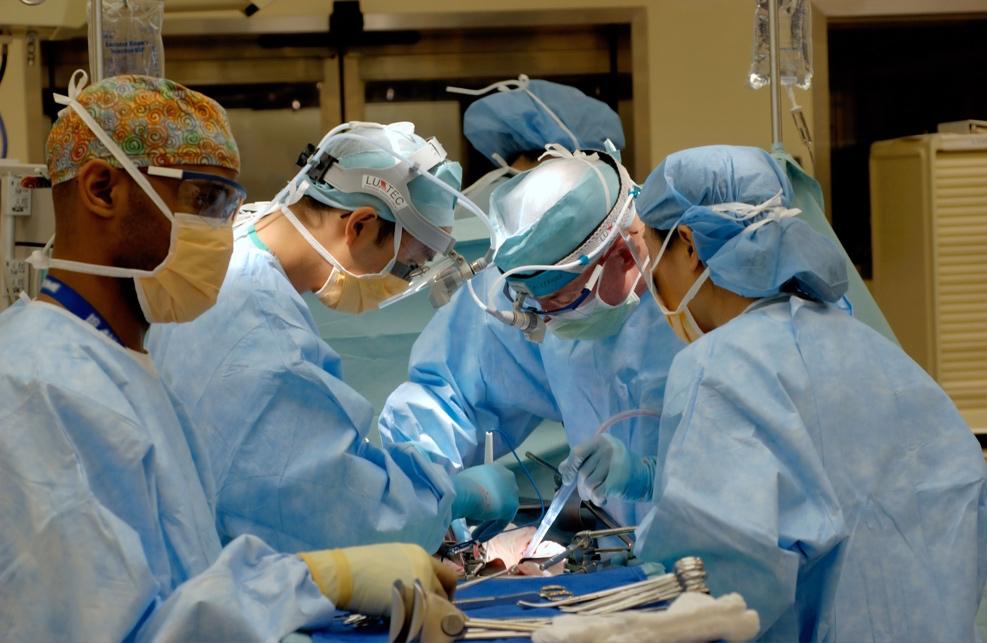
Apart from seeming strange, there is a fundamental problem in conducting xenotransplants: the body’s readiness to attack foreign tissue. Because our immune systems are primed to defend our bodies against foreign invaders such as bacteria, our immune systems also identify transplanted organs as foreign, potentially harmful invaders and launch attacks. This attack is called transplant rejection and is
common even in human to human transplants. To prevent transplant rejection, the recipient usually takes immunosuppressant drugs, which can be dangerous due to infection risks.
To further reduce transplant rejection risks, doctors attempt to closely match the donor’s organs with the recipient’s. Organ matching is done through tissue typing, where doctors identify proteins covering the
surface of the organ, called antigens, and try to closely match the antigens of the donor to the recipient. Only identical twins have identical tissue antigens; all other organ matching is imperfect. Blood donation is an important example of antigen matching; it is vital that blood transfusions only occur between people with specifically matched blood types.
18 Autumn 2022 | eusci.org.uk features
Image by National Cancer Institute courtesy of Unsplash
A Series of Un Porcine ate Events: What is the history of human to human transplants?
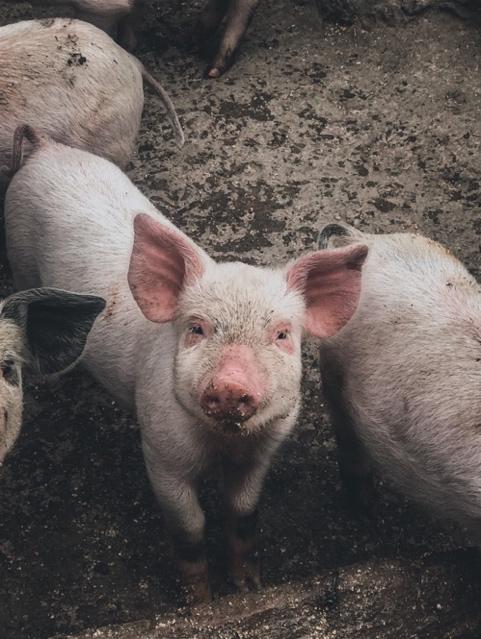
The importance of closely matching antigens in human to human surgeries has taken decades to understand.
Alexis Carrel pioneers blood vessel joining (anastomosis), making organ trans plantation feasible for the first time (and earning him a Nobel Prize).
A series of successful transplant firsts, including the UK’s first heart transplant and first liver transplant.
The world’s first full face transplant in France. English and Scottish Governments also switch to “opt out” organ donation legislation.
Dr. Joseph Murray performs the first successful kidney transplant operation between identical twins, a procedure which has since saved ~400,000 lives.
Transplantation expands to include pancreases, lungs, and, corneas Wales introduces laws which mandate that adults 18 and older who die automatically consent to organ donation unless they explicitly “opt out”.
Today, while human to human organ donations are well researched and have relatively low risks, there still remains an organ shortage, leading researchers to consider animals.
A Fly in the Oinkment: What is the history of animal to human transplants?
Imagine the body’s response to an organ that is not even human but animal. The human body’s immune system would have an even stronger reaction to xenotransplants. Xenotransplant rejection has been documented several times throughout history. Following Dr. Murray’s successful kidney transplant operation in the 1950s, from 1963 1964, Professor Keith Reemtsma attempted to transplant chimpanzee kidneys into humans on the hypothesis that primate organs were evolutionarily similar to human organs. However, of the 13 chimpanzee to human xenotrans plants, none of the patients survived beyond nine months.
In 1966, using improved immune suppressants, Dr. Thomas Starzl also attempted transplants using non human primates on patients as young as seven; however, his patients all died soon after surgery. In 1984, Dr. Leonard Bailey transplanted a baboon heart into the American infant Baby Fae who had a fatally underdeveloped heart. Though otherwise healthy, Fae was only expected to live for two weeks with the condition; however, she lived for 21 days with the transplant. Baby Fae lived two weeks longer than any previous simian heart transplant recipient but ultimately died, most likely due to an unavoidable blood type mismatch.
Image by Dan Renco courtesy of Unsplash
features
Autumn 2022 | eusci.org.uk 19
1902 1954 1960s 1980s 2015 2005 2017
Gene editing serves as the final stepping stone in overcoming the zoonotic barrier. Gene editing changes an organism’s DNA, allowing scientists to precisely add, remove, or alter specific DNA sequences. One of the most famous gene editing technologies is CRISPR Cas9, a system which revolutionised the field due to its fast, cheap, accurate, and efficient process. With CRISPR Cas9, scientists are able to remove or “knock out” the genes which cause PERV as well as remove a sugar in pig cells that would lead to immediate organ transplant rejection in humans. As a proof of concept, in September 2021, surgeons at N.Y.U. Langone Health successfully attached a genetically edited pig’s kidney into a brain dead patient, with the patient’s family’s consent.
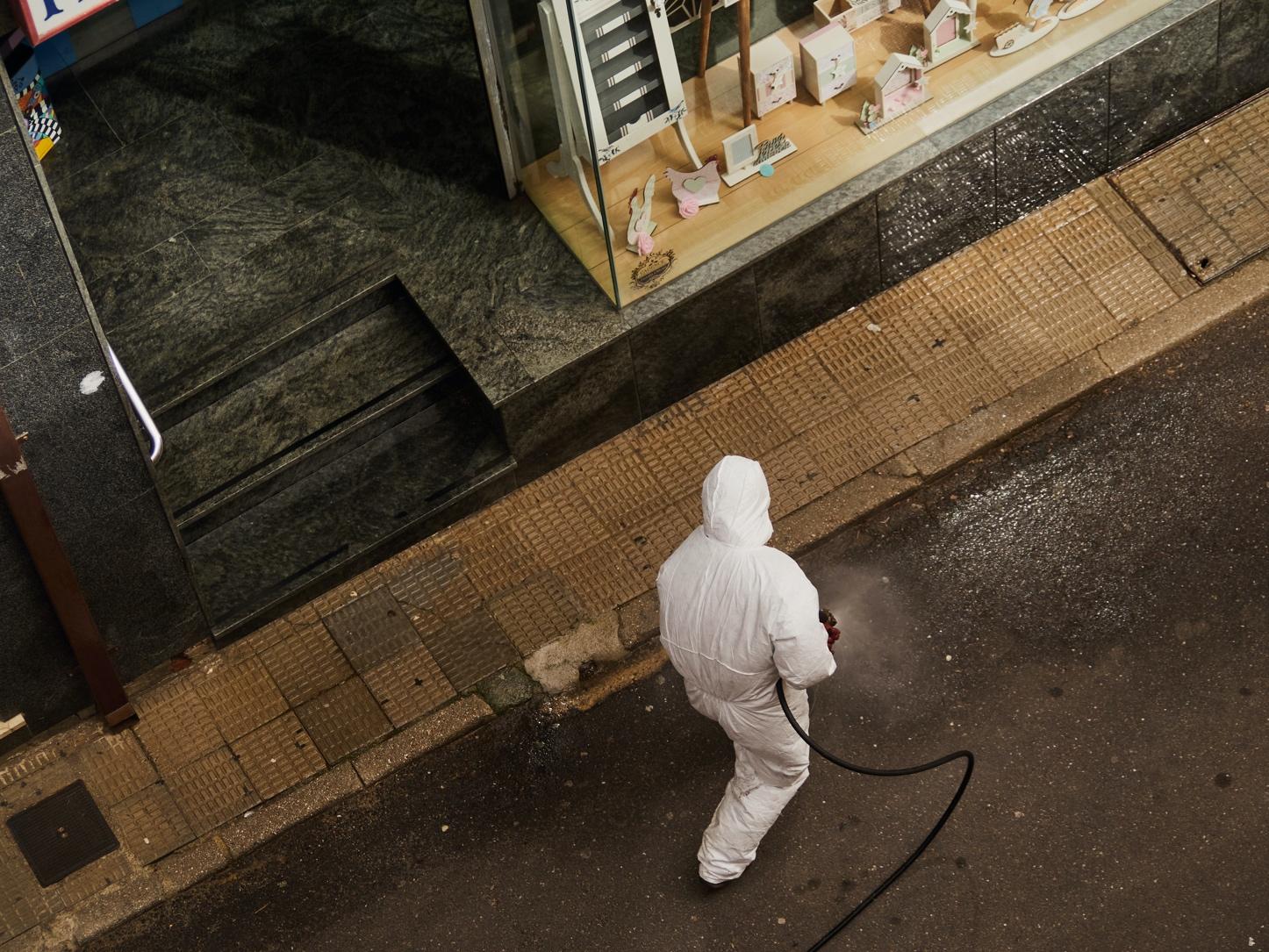
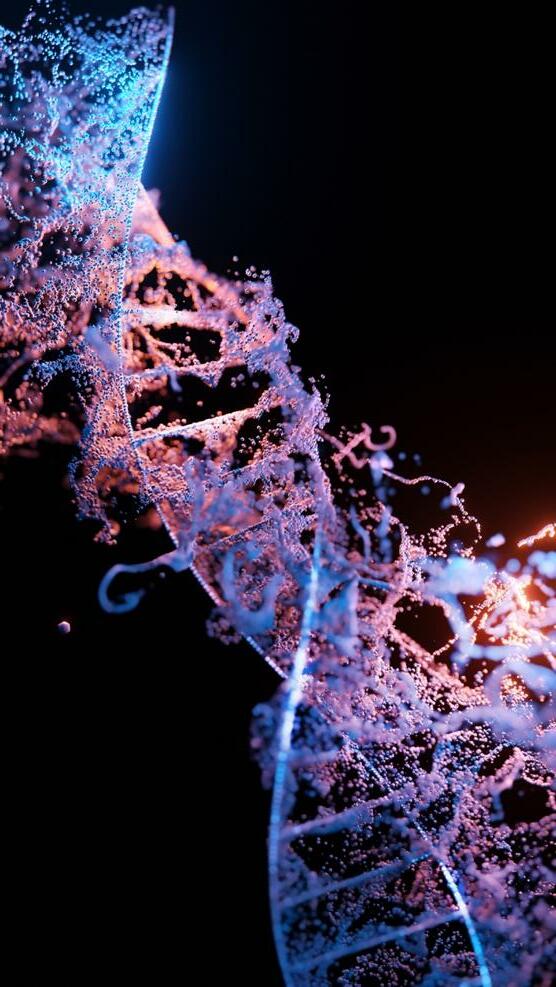
Following this successful pig kidney xenotransplant, a team of doctors led by Dr. Bartley Griffith
performed David’s novel pig heart surgery on 7 January 2022 at the University of Maryland Medical Centre. The pig heart came from Revivicor, a company founded by PPL Therapeutics, the same UK company which created Dolly the Sheep. Dolly was the first mammal to be cloned from an adult cell at the Roslin Institute at the University of Edinburgh in 1996. To make the pig heart that David received safe, scientists genetically edited 10 genes, removing three genes to reduce the risk of antigen rejection, adding six human genes to promote acceptance, and knocking out one porcine growth gene to ensure the heart does not grow after the xenotransplant. While there are risks to any heart transplant, the subsequent weeks and months after this surgery are especially crucial for the future of xenotransplantation.
Xenotransplantation advancements have been sparse due to another daunting barrier: animal to human transplants have a high risk of transferring microorganisms, like bacteria and viruses, from animals to humans. Infectious diseases that jump from animals to humans are called zoonoses, with the Covid 19 pandemic showing how serious this risk can be. Zoonosis risks following xenotransplantation are high and
While early xenotransplants were taken from nonhuman primates due to perceived immunological compati bility, researchers have begun using pig organs. There are several reasons why pig organs are potentially human primates: pigs reproduce quickly and numerously; pig organs and adult human organs are similarly sized; and pigs grow rapidly and are cheaper to maintain than primates. However, pig organs inherently carry a risky retrovirus, a virus that uses RNA to cate as opposed to DNA, called porcine endogenous retrovirus (PERV), that would inevitably be transferred to human donors without intervention via gene editing. HIV is known example of
20 Autumn 2022 | eusci.org.uk features
Possible: Could xenotransplanted organs cause (another) pandemic? Let’s Get Microsco pig: What is gene editing and how is it relevant to xenotransplants?
Snout
Image by Sangharsh Lohakare courtesy of Unsplash
Image by Manuel courtesy of Unsplash
While the promissory nature of xenotransplantation is exciting, there are several pressing questions. Is it morally acceptable to farm animals for their organs? How certain are scientists that the risks posed by animal organs have been properly reduced and mitigated? And, given finite resources, who “deserves” animal organs most?
The idea of “deserving” organs has been recently scrutinised as it came to light that David was convicted of stabbing Edward Shumaker in 1988, leaving Edward paralysed. Edward’s family has subsequently questioned whether David deserved to have the “groundbreaking” surgery. However, the transplant team quickly res ponded that a person’s criminal past could never prohibit them from receiving treatment, with officials at the University of Maryland Medical Centre writing that it is the “solemn obligation of any hospital or health care organisation” to treat all patients. Officials further stated that “any other standard of care would set a dangerous precedent and would
that underpin the obligation physicians and caregivers have to all patients in their care”.
As part of their duty of care, doctors are closely monitoring David’s condition not only for transplant rejection but also for zoonotic risks. While the zoonotic risks are relatively low given the safety precautions the genetic editing and rearing the pig under special hygienic conditions Covid 19 has proven that animal zoonosis can wreak havoc on global public health. With this in mind, it is important that xenotransplants prioritise public health protection.
As addressed by the Ethics Committee of the International Xenotransplantation Association, a key contingent of these protective protocols is the patient’s consent to lifelong monitoring without the possibility of withdrawing from observation, which may negatively impact the patient’s autonomy or ability to self govern.
Perhaps we should consider not only human autonomy but also
xenotransplantation?
activists, such as the PETA and the UK based animal rights group Animal Aid, protest against the use of animal organs for human transplants. PETA argues that animals should not be treated as “tool sheds” to be raided but as “complex, intelligent beings”. Animal Aid asserts that animals have the “right to live their lives”.
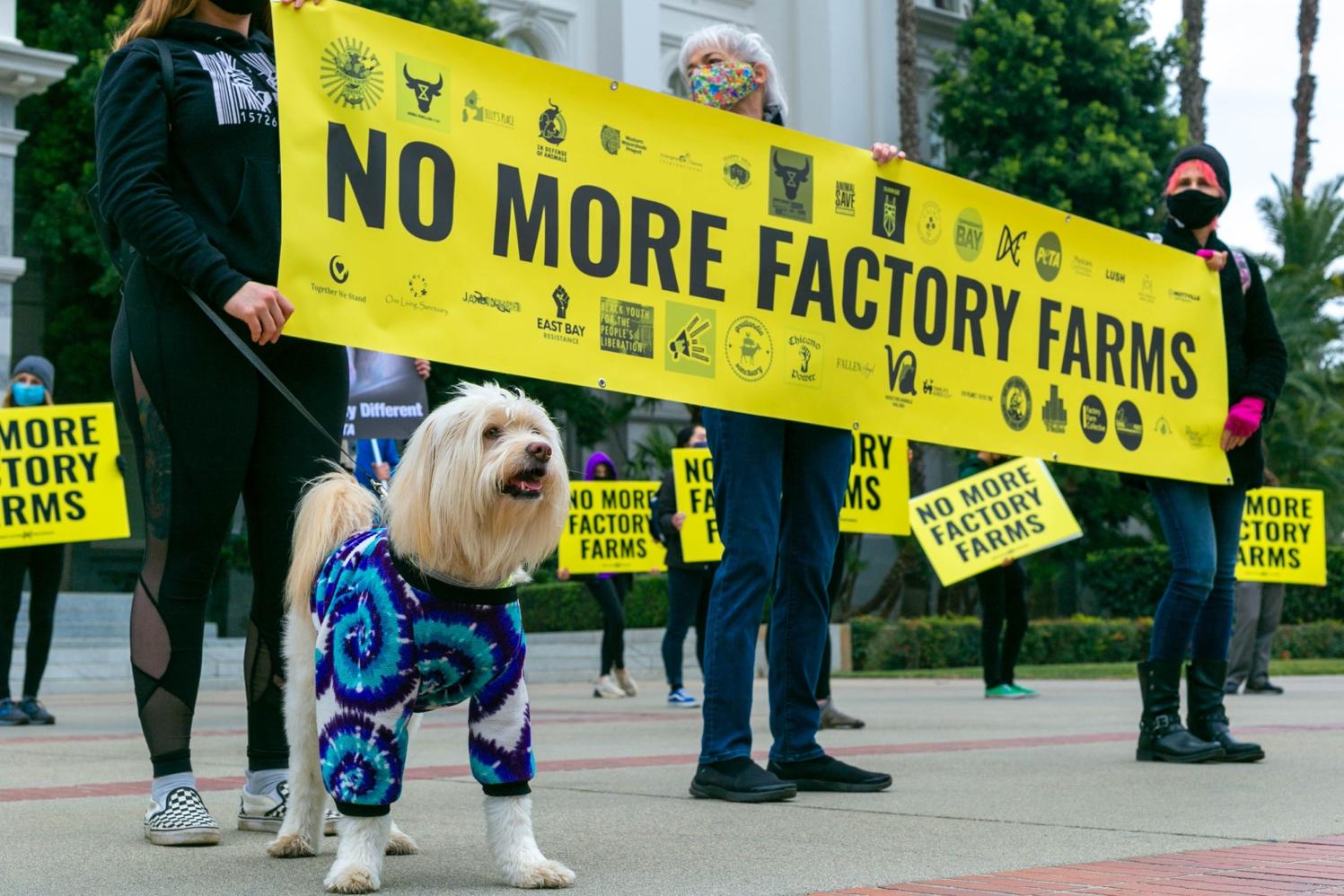
Questions of medico ethical permissibility often beget questions of religious permissibility, for example, with Jehovah’s Witnesses explicitly refusing blood transfusions. In the case of animal organs, since some religious laws prohibit the consum ption of pork, like in Judaism or Islam, concerns have been raised about religious objections to using pig organs in humans. However, leaders from both religions have so far agreed that the use of animal organs to preserve human lives justifies xenotransplantation procedures. These practical and ethical consi derations will continue to evolve, with the future of xeno transplantation uncertain but hopeful.
Xenotransplantation could be the silver bullet which solves the human transplant crisis and offers hope to numerous people around the world on transplant waiting lists. The scientific advancements that have led to the successful art into a human recipient are fascinating and could be applied in different contexts to solve a delivering. While David’s field of xenotransplantation, it doesn’t mean that pig organs will immediately become available for every person on organ transplant waiting lists. Before the widespread use of animal must first
Emma Nance (she/her) is studying a PhD in bioethics and bioscience, focusing on One Health models of disease: science, ethics and society. Her Twitter: @emmaLNance.
Autumn 2022 | eusci.org.uk 21 features
Latest Update: Almost two months after receiving the pig heart transplant in January 2022, David Bennett died on 08 March 2022. While the precise cause of death is not yet known, a full investigation will determine how feasible xenotransplantation is going forward.
In a Pig le: What are the ethical, legal, and social issues of
Image by Jorge Maya courtesy of Unsplash
Keepingitcool
A fresh dip into the health benefits of outdoor swimming
In the late 1970s, Debbie Papadakis, life long swimmer and educator, used to go camping with her parents on the coast of Anavyssos, some 35km southeast of Athens, Greece. She couldn’t wait to run into the sea and paddle out as far as she could. There, with no other humans around, she appreciated a kind of space not found anywhere else in the world. “The open sea would be the best place for mafia members to have a conversation,” she jokes, “there is nobody there to listen”.

Debbie is not alone in craving the buoyancy and detachment open water provides. Swim England, the country’s national governing body for swimming as a sport, found around 7.5 million people participated in outdoor swimming in 2018 in the UK. Similar trends exist around the globe. Even before the pandemic boosted numbers, outdoor swimming had been growing.
Health and wellbeing often top the responses to why people choose to
swim outside. Swimming has helped Debbie overcome both physical and mental trauma, and she is far from unique in finding solace and restoration in water. The state of immersion and the repetitive movements become a meditative experience that, as well as alleviating stress and clearing the mind, bring emotions and thoughts into alignment. But does this idea of outdoor swimming hold up to scientific scrutiny?
Shallow Evidence
In 2019, Hannah Denton and Dr Kay Aranda published an article on the wellbeing benefits of swimming in the sea, hinting at the little empirical research that has been undertaken, despite an abundance of anecdotes. Herself also an avid swimmer, Denton conducted “swim along” interviews with her participants.
Overall, the six regular swimmers Denton interviewed found swimming to be “transformative” in that it raised awareness of their body and sensations acted in a healing manner towards their mood and enhanced their perceived capacity to cope with
acted in a healing manner towards their mood and enhanced their perceived capacity to cope with life issues. Moreover, they saw swimming as “connecting” them to both the natural environment and other people. The psychologist acknow ledges that her findings may not provide an “objective reality of sea swimming” given that it was based on only a few individuals’ experiences.
In 2017, Swim England comm issioned an independent team of researchers to scrutinise and synthesise the evidence on the health benefits of swimming from an
individual to a national level. Their report, The health & wellbeing benefits of swimming, highlights the potential of the activity to benefit a broad range of the population due to its popularity and accessibility.
Drawing from a range of clinical observational studies and exercise based interventions, the authors present evidence of swimming having a positive impact in lowering stress and anxiety levels as well as reducing depression, although not before underlining the scarcity of relevant research.
22 Autumn 2022 | eusci.org.uk features
Alkisti Kallinikou explores the benefits of open water, cold swimming and how it can help people exercise after injuries, improve their mental health, and give people confidence.
Illustration by Lydia Hunt
Diving Deeper
Any exercise is favourable for mental health because the ensuing release of endorphins makes us feel blissful, and research shows that exercising outdoors can be even more effective.
By default, outdoor swimmers immerse themselves in cold water. Some winter and ice swimming enthusiasts even venture out during the coldest months or in polar regions. The exposure to cold water triggers a stress response from the body, commonly referred to as the “cold shock” reaction.
When a person enters the water, the sudden cooling causes an involuntary gasp as they try to regulate their breath. Hyper ventilation, increased heart rate and blood pressure follow. Catec holamines the organic compounds produced when a body is stressed in order to prepare for the “flight or fight” reaction soar. In other words, the sympathetic nervous system, our bodies’ built in network that guides response to stressful or dangerous situations, is activated.

While the cold shock reaction could be the link between outdoor swimming and mental health, there is also a social aspect to consider. Swimmers frequently establish formal or informal groups. The camaraderie arising from these communities enhances the sense of one’s “belonging”, something commonly recommended by doctors treating depression and anxiety.
Splash Back
Embedded as it may be in our culture these days, swimming has generally been considered an unnatural activity for humans. Some theories posit that humans, as descendants of aquatic creatures, retain the memory of being surrounded by water (something that is also present as they begin life in a womb surrounded by amniotic fluids). However, the human body has developed through the ages to function effectively on land and is therefore not exactly suited to water. In other words, learning to swim takes practice.
Nonetheless, the idea of water as a cure is far from new. The Greeks were enthusiasts of hot baths, as were the Romans who would alternate between soaking in warm water pools and cold water ones the frigidariums in a process not unlike those followed nowadays in some Nordic regions. Similarly, in the East, Chinese and Japanese civilisations also exalted the therapeutic properties of water and springs. Cold baths, a form of primary hydrotherapy, were used to treat fever from around 180 BC.
In Medieval Europe, the importance of swimming declined as part of a broader tendency that deprecated anything physical, including the body itself. Later, the Renaissance paved the way for swimming’s restoration with schools and colleges even adding it to their curricula. Classic texts promoting swimming resurfaced. These were complemented by Mercuriali’s work, De Arte Gymnastica, published in the 16th century. In his writings, the author praised swimming in the sea as a cure to chronic headaches, rhinal and respiratory malfunctions, stomach, liver, and spleen ailments, skin rashes, and more. Likewise, The Hydropathic Encyclopedia, published in the mid 19th century, prescribed swimming as “health preserving” and “eminently therapeutic”.
Autumn 2022 | eusci.org.uk 23 features
Illustration by Lydia Hunt
From Rumour to Research
It seems clear that swimming has historically been seen as beneficial for a wide range of conditions. However, general agreement on the medicinal properties of swimming is unlikely to get it into your GP’s prescription book. Researchers today are still reluctant to make broad assertions due to studies being limited to very small samples (often fewer than ten people) and short durations (up to a few months).
In a review published in 2020 in the International Journal of Environmental Research and Public Health, Professor Beat Knechtle and his team of researchers from across Europe, the US, and Canada acknowledge more than twenty different studies (all with either practical or clinical relevance) which demonstrate a wide range of benefits to cold water swimming. This list includes blood and hormone functions, respiration, and mood. Knechtle’s review consists mostly of studies conducted in regions where the activity is regularly practised, notably Northern and Eastern European countries.
The techniques used to determine the impact swimming has on health include clinical tests such as blood sample analysis, temperature mea surements, and blood pressure measurements, often comparing the results to those of a control group. Impacts on mental health are traced by methods such as interviews and questionnaires before and after a swimming period, recording of symptom frequency and severity blood analyses. Despite the difficulties of designing an ideal study (for
example controlling for swimming distance, water temperature, and time spent immersed), the majority of studies confirm the informal accounts: outdoor swimming has the potential to positively affect our health.
However, Knechtle’s review is equally interested in the risks posed by cold water swimming, especially hypothermia. According to exercise physiology a human immersed in 0°C water is expected to survive just 30 minutes. Novice swimmers could overestimate their abilities and fail to react before they get exhausted or begin to lose consciousness. In such cases, as Knecthle observes, it is cardiac stress that may lead to death and not hypothermia itself.
investigated outdoor swimmers’ perceptions of their health and the extent to which outdoor swimming impacts their symptoms. Their findings demonstrate that the participants largely perceive swimming improves their health. Specifically, they reported a significantly reduced appearance of cardiovascular and circulatory symptoms, musculoskeletal injury, as well as mental health conditions.
The reaction to the first cold shock and exhaustion are considered the main factors which may lead to drowning. The World Health Organisation lists drowning as the third leading cause of unintentional fatal injury worldwide. Lack of swimming skill and knowledge is largely behind this number, as far fewer accidents involve seasoned swimmers.
A study spearheaded by Professor
Why We Swim is Bonnie Tsui’s treatise and love letter to swimming and the open waters. The author, journalist, and veteran open water swimmer, dedicates a full section of her book to the physical impact of swimming. Tsui discusses work done at a laboratory at the University of Texas, investigating high blood pressure and arthritis. Those scientists found that the effects swimming has on these conditions surpass those from other types of aerobic exercise. As Tsui further explains, following immersion blood circulation moves away from the extremities and towards the heart and lungs, making them work harder and at the same time building their endurance. This exercise results in lower blood pressure in the long run.
The same lab didn’t hesitate to exalt swimming particularly in cold water as an arthritis treatment. Exercising in the water is smoother for people suffering from the condition as the strain on joints is reduced. It minimises pain and, ultimately, stimulates mobility and function. This explains why it is also as a form of physiotherapy

features
24 Autumn 2022 | eusci.org.uk
“The idea of water as cure is far from new.”
Image by Pexels courtesy of Pizabay
attack that left him shocked and numb. Two years later, a motorcycle accident resulted in a shattered ankle that would require three operations over the following months. Ventura could only walk with crutches. In a short time, his life had drastically changed, and he was convinced it would only continue to worsen.
The cardiologist who treated Ventura after the ischemic attack suggested he start doing some form of aerobic exercise. Until that moment, Ventura had a good relationship with water, having been a windsurfer in the past, but he never took swimming classes or thought of himself as a swimmer.
“Two months after my accident, I went in the water again. I had spent several days bed ridden and then I could only hobble for a little while using crutches. Imagine someone who can barely move and then gets in the sea and can glide easily in the water with grace. I was beyond emotional! I promised myself right there and then that in one year’s time, I was going to participate in an open water race, and I didn’t give up.”
breathing coupled with the connection with nature engender a unique relaxation of the mind and concurrent exaltation of the soul.
spaces”. However, a range of studies using indicators including self esteem, fulfilment, resilience, (social) confidence, connectedness, stress, and mood, confirm that when it comes to mental wellbeing, swimming can be therapeutic.
In addition to overcoming trauma, it is widely believed that aquatic exercise offers opportunities for specific populations that may be otherwise challenged to exercise on land. Ethel Kotzamani is a swimming instructor that works with people of all ages, including disabled and neurodivergent persons. “In the water, everybody is equal,” she says. “It is simply powerful to watch my students participate in open water competitions and they are also thrilled, glowing with the excitement of fulfilment. Hydrostatic pressure is instrumental when dealing with several types of conditions. People become autonomous and their quality
“I will never forget the indescribable emotions that came with completing the race”, remembers Ventura. “My goal was simply to finish but I achieved a good ranking, too. I felt that I existed again, that I wasn’t ‘perished’. Now I’m always giddy with anticipation before entering the water. It’s the only space I can be alone with myself, and I gain physical and mental exhilaration.”
Most swimmers are simply convinced that the activity boosts their energy, ameliorates possible ailments, and enhances their overall health, both physical and mental. There may be some way to go in terms of research, but the emerging scientific data point the same way: take up swimming and do it regularly.
Alkisti Kallinikou (she/her) is a writer and aspiring journalist. She is also interested in science communication.

Autumn 2022 | eusci.org.uk 25
“The effects swimming has on these conditions surpass those from other types of aerobic exercise.”
Image by Martín Saenz courtesy of Unsplash
Remembering
Eunice Newton Foote: the unrecognised climate change pioneer
By examining the life and work of Eunice Newton Foote, Alice Drinkwater allows an unknown scientist to be remembered and questions what would have happened had she had more recognition at the time.
Climate change is usually seen as a modern issue with our understanding growing as the impact of carbon emissions becomes clear. However, the truth is that the heating power of carbon dioxide in the atmosphere was first demonstrated (and its future impacts predicted) by a female amateur scientist as early as the 1850s. Her research was ignored and rejected, but time is seeing her vindicated.
Eunice Newton Foote was born as Eunice Newton in Connecticut, USA, in 1819. Her father, Isaac, was a farmer and a distant relative of Isaac Newton, while her mother, Thirza, was a homemaker. Both strongly believed in the importance of educating their children regardless of gender.
At the time, expectations were rigid around a woman’s behaviour in society. An influential factor on Eunice’s growth (both intellectual and social) was her education she was encouraged by her teachers at Troy Female Seminary to pursue science, attending biology and chemistry lectures at her local college. Eunice stayed up to date with scientific literature and performed amateur experiments throughout her life. She married Elisha Foote, a judge, in 1841. The two seem to have been a good match he too was an amateur scientist and inventor.
Legally, women were considered inferior to men, with no voting rights, limited property rights, and little access to further education. When
married, women were expected to defer all civil rights to their husbands. Eunice’s ambitions did not align with this situation, and she became heavily involved in the women’s rights movement. She and her husband were present at the first women’s rights convention the 1848 Seneca Falls convention in New York State. Eunice was part of the committee responsible for writing up the proceedings of the convention. Both Footes signed the Declaration of Sentiments which demanded equal legal rights for women, including the right to the vote Eunice was the fifth signatory, reflecting the importance of her contributions.
gases were responsible.
As such, Eunice’s 1856 experiments concerned the heating properties of different gases. She used two glass jars with thermometers, balanced to the same temperature. Each cylinder was filled with a different gas (carbon dioxide, hydrogen, and air) and exposed to sunlight. Eunice then examined which gas kept its glass jar warmest as it was heated, and which retained its temperature best.
Even while campaigning for gender equality, Eunice had begun her pioneering experimentation. During her life, the industrial revolution was in full swing. CO2 levels were 33% lower and the global average temperature was 1.5 degrees colder than today. Joseph Fourier had postulated in the 1820s that the atmosphere acted as an insulator, paving the way for what we now know as the greenhouse effect. However, it was not known which

The result of her experiments showed that carbon dioxide was highly effective at capturing heat. Eunice predicted that “An atmosphere of that gas would give to our Earth a high temperature; and if as some suppose, at one period of its history the air had mixed with it a larger proportion than at present, an increased temperature... must have necessarily resulted”. Her conclusions were presented at the 1858 American Association for the Advancement of Science (AAAS) meeting and later published in the American Journal of Science and Arts. This publication was the first mention in print that increased levels of carbon dioxide would result in global warming.
However, Eunice did not present her own findings at the AAAS meeting, despite women being allowed to speak at the event. Instead, Joseph Henry of the Smithsonian Institute spoke for her, prefacing by saying: "Science is of no country and of no sex. The sphere of woman embraces not only
features 26 Autumn 2022 | eusci.org.uk
the beautiful and
“Science is of no country and of no sex. The sphere of woman embraces not only the beautiful and the useful, but the true.”
Image by Miguel Bruna courtesy of Unsplash
the useful, but the true". Henry’s statement, though perhaps well intentioned, gives an idea as to why she may not have felt comfortable women at these conferences were treated as curios rather than peers. Newspaper coverage of such meetings, while discussing the science presented, often commented on the beauty of the scientists’ wives attending. The AAAS in their conference summary made no mention of Eunice’s work.
Eunice did not receive much recognition overall. Her paper was referenced in a Scientific American piece titled “Scientific ladies experiments with condensed gases”. Her work was praised, although the author spelt her name incorrectly. She received some international interest, with summaries of her work featuring in journals of Jahresbericht (German Mathematical Society) and the Edinburgh New Philosophical Journal However, these articles ignored her conclusions on the potential impact of carbon dioxide on temperature worse, the Edinburgh New Philosophical Journal listed her husband as the author.
Three years after Eunice’s experiments, John Tyndall performed research on “terrestrial radiation”, determining which gases were responsible for the atmosphere absorbing heat. His subsequent results are commonly regarded as the foundation of climate change science. Tyndall had the funds and support (as a Professor at the Royal Institution) to use state of the art machinery to perform experiments using infrared
radiation on multiple greenhouse gases under controlled conditions. Eunice’s experiments were by comparison limited she did not have the capacity to experiment specifically with IR radiation or control factors such as pressure in the jars. Bearing in mind her position in society and experimental limitations, her achievement and prophetic conclu sions remain impactful. Tyndall did not cite Eunice’s paper in his work despite being a keen reader of multiple journals. It is not known whether he was aware of her.

So why did Eunice’s work not have the impact it may have warranted? She was certainly hampered by her society being unwilling to recognise a female voice. Furthermore, the burgeoning academic community in the USA was poorly connected at the time, so her results were less likely to reach both a domestic and an international audience. Those who had the opportunity to champion her work (such as her friend Joseph Henry) did not, perhaps not having the foresight to understand the potential of her findings.
If her peers had listened and taken women like Eunice’s results seriously, where might our understanding of climate change be? With support, Eunice may have brought results to the community even earlier. With the prospect of increasing the number of people involved in the climate change discourse, it is not a great leap to suggest there may have been a chance for us to pre empt climate change and limit greenhouse gas emissions at an earlier stage.
But these are theoretical questions. Eunice died in 1888 without ever truly knowing the power of her words, nor how insightful they would prove to be. Her legacy did live on in her two daughters: Mary would go on to be a social activist, Augusta a prominent marine biologist. Twenty years after her death, CO2 levels exceeded 300 ppm for the first time and would never reduce below this.
When considering the story of Eunice, one can’t help but think of the millions of women who were ignored, even persecuted for wanting to pursue science. She was relatively lucky to be in a position where she could perform experiments and be published. The minds and abilities that have been repressed over the years, for reasons of gender, race, and economic situation, have undoubtedly set back our understanding of science in all fields. Her story shows that you don’t need sophisticated equipment to make a real contribution to science; that we can all have something to bring.
Had Eunice been born today, there is no doubt that she would be a climate physicist and a proud feminist. All scientists should be forever grateful to women like Eunice for their determination in laying out a pathway to follow. There is still work to be done, but it is because of the brave women of the past that we can enjoy the freedoms that we do today. We all owe them so much.
Alice (she/her) is a fourth year PhD student studying greenhouse gas metrology.
Autumn 2022 | eusci.org.uk 27
Image by Chris LeBoutillier courtesy of Unsplash
LOOps or strings?

General relativity was just the first step to understanding how gravity works. Jessie Hammond explores the way forward.
Over 100 years ago, Einstein rocked the physics community’s conception of how gravity works. His theory of general relativity usurped Newton’s theory which had been taken as fact for centuries beforehand. However, it isn’t the end of the story. We are stil a long way off from finding a theory which fully describes how gravity behaves, especially when it comes to the bizarre phenomena of quantum mechanics mixing with gravity (known as quantum gravity). Whilst the theory of general relativity has been superb at explaining observational evidence thus far, it seems to not be compatible where small, dense areas are concerned.
Knowledge about the overlap of quantum mechanics and gravity is particularly valuable when studying objects which are extremely small but also have a lot of mass, such as black holes or neutron stars (a star remnant that is entirely made up of neutrons). The good news is that there are many candidates ready to take up the challenge of explaining quantum gravity. To start you off o exploration of quantum gravity, I have narrowed the field down to two of the best chances we have right now: string theory and loop quantum gravity. At the end, you can decide which gets your vote as the most likely to describe our reality.
Space is just granules?
The first theory we will explore of the current favourites is called loop quantum gravity (LQG). Much beloved by Carlo Rovelli, a theoretical physicist considered as the founder of LQG, the theory states that space is not a continuous field, as once was thought, but made up of granules.
From the early days of science with Aristotle and Newton, space has been thought of as a fixed entity on which objects interact. However, Einstein came along and changed that thinking so that now space, or more specifically spacetime, was a field which everything else interacted with. This spacetime field was also how gravity worked, forming the gravitational field. It is not a fixed entity in that
spacetime affects the motion of matter, and matter in turn affects how spacetime curves. This means that there is no longer any background space; this is what loop quantum gravity accepts and uses to its advantage.
Imagine a point with a charge (you can decide whether it is negative or positive) which sits in the electromagnetic field, a field which describes how light travels (see diagram). The point charge has various lines of electric charge coming into (if negative) or going out of it (if positive). Now, what would happen if we take away this point charge? Do the lines disappear along with it? Not necessarily. When you
get down to it, these are known as Faraday’s lines of force for the electromagnetic field (specifically the electric field in this case as we assume no magnetism) and are basically quantum excitations of the field, much like a ripple on a lake. In the absence of charge, these lines close around themselves to form loops. The theory of loop quantum gravity suggests that a similar thing happens with quantum excitations in the gravitational field.
There is a lot more to the theory than just that, but all the other mathematics and predictions come from this thought process. These loops interact with particles, so the particles travel in straight lines, and the loops also describe space as
features 28 Autumn 2022 | eusci.org.uk
Image by Kier… in Sight courtesy of Unsplash
consisting of finite elements. In other words, space is granular! And from this theory spill out many other fascinating predictions. In the 1970s, Stephen Hawking formulated a theory in which black holes can radiate particles due to quantum mechanical effects at the black holes boundary (the closest any object can get to a black hole without being sucked into it). These particles, particularly when talking about photons, would have an associated heat energy and temperature. Hawking found that if you knew the black holes temperature and mass, you could find its entropy. Entropy is a measure of how disordered a system is; the more disorder, the higher the object's entropy. A success of loop quantum gravity is that, assuming LQG holds true, Hawking's entropy around a black hole can be derived.
Some of the dynamics of the Big Bang can also be worked out using loop quantum gravity, potentially getting rid of the fact the universe initially started out as a singularity (a point where it is infinitely small and dense). Instead, it suggests there was a “Big Bounce” whereby a previous, older universe “bounced” (or quantum tunnelled) into our universe.
However, the most important shortcoming of this theory is that none of this has been experimentally tested yet. For a scientific theory to have some credence, it must also be backed by observational evidence, of which there is none for LQG, whereas theories such as general relativity can boast a wide sleuth of experimental successes. Furthermore, there are still several areas of the theory that require further work, so it cannot be said for certain that this is the theory for us.
Strings, strings, strings
Another very popular theory of quantum gravity that has been
generations of physicists over the years to become one of the most mathematically refined theories of quantum gravity we have. Unlike loop quantum gravity’s granular structure of space, string theory suggests the universe is made up of infinitesimal one dimensional strings

These strings can fold, twist, vibrate, or generally move, and we see these motions as observations in expe riments in all fields, from particle physics to gravitational effects. As an example of this, some of the strings’ vibrational states produce the point particles that make up everything we see. More recently, a new and adapted version of the theory, M theory, has added branes to what makes up our universe as well. These are also fundamental objects of the universe, but contain higher dimensions than strings.
this, it also relies on supersymmetry being valid. Supersymmetry states that the particles which are connected to a force (for example, photons or W bosons) are equivalent to those that we see in matter (for example, electrons, neutrinos, and quarks that make up protons which make up atoms). This has yet to be tested and confirmed, and it is looking less and less likely to be a possibility as even the theory’s most ardent supporters say experiments like the LHC aren’t powerful enough. Without super symmetry, string theory would need a minimum of 26 dimensions, arguably less believable than the 11 needed for M theory.
Even though the strings are too small to be observed, the theory has had many successes, including being able to explain fundamental constants such as the electron mass. It has also been able to describe Hawking’s black hole entropy by describing the internal structure of the black hole as its source. Additionally, it includes quantum gravity already built in as one of the many vibrational modes of the strings (or the ways the strings can vibrate) must be linked to the graviton, the “gravity particle”, and thus quantum gravity is merely a consequence of this theory.
Your choice: loop quantum gravity, string theory, or something else?
In either of these theories, a potentially fatal obstacle is the lack of experimental evidence to back them up. Science is based on a theory being proposed and only being truly accepted when its observational predictions are confirmed. It is extremely hard to gather data sensitive enough to rule out theories or constrain the ideas that physicists have kept coming up with, and it is a hurdle that quantum gravity will have to leap over someday in order to progress any further. There is still hope, however, for upcoming surveys and experiments with higher sensitivity to shed more light on this area of research.
So, our universe is made of unobservable strings and branes, governing all phenomena we observe. All good so far. Well, there are a few tricky things at play here still. For example, in order to explain this theory fully, we need 11 dimensions, six of which are only visible from the perspective of the strings. On top of
For now, we can only ponder and debate: which theory strikes you as being able to explain our weird and wonderful universe better? Or is it all just made up fantasy and some other explanation is much more likely?
Jessie Hammond (she/her) is a fifth year MPhys Physics student and the head sub editor at EUSci.

features Autumn 2022 | eusci.org.uk 29
Image by meriç tuna courtesy of Unsplash
Image by Alina Grubnyak courtesy of Unsplash
Lockdown led to quieter but not cleaner oceans
The global Covid lockdowns were accompanied by numerous reports of nature bouncing back. But was this merely a fluke? Andrew Twelves investigates.
Two years ago, Italy became the first country in Europe to impose a lockdown in response to the Covid 19 pandemic. In the following months, amidst the stress of those initial lockdowns, the sounds of birdsong freed from traffic noise were a source of comfort and optimism to many around Europe and the rest of the locked down world. This hiatus in noise pollution was accompanied by reductions in other forms of pollution, including those which usually blight the oceans.
However, in a new paper published in Science of the Total Environment, researchers from the Italian Institute of Marine Sciences (ISMAR) question the degree to which lockdown policies were in fact responsible for cleaner seas during the spring of 2020.
Italy’s Covid clean seas were a coincidence.
Satellites orbiting the Earth are constantly observing the world's oceans and coastal seas. Analysis of
satellite images can detect the change in colour which occurs when microscopic algae phytoplankton proliferate near the ocean surface. These organisms, using chlorophyll to photosynthesise and generate energy, are consumed by zooplankton and thus form the basis of marine ecosystems.
When these phytoplankton blooms are fertilised by industrial runoff, however, they can grow so large that they crowd out other forms of life, starving them of oxygen and light. This means that the intense green patches of phytoplankton seen in satellite images can sometimes be used to locate the ecologically harmful transport of pollutants from land to sea.
The scientists at ISMAR were well placed to examine the impacts of lockdown on coastal pollution. Northern Italy is characterised by extensive industry, with the potential to release pollutants; as well as by large rivers, which can carry these pollutants onwards into the Adriatic
Sea. From early in the lockdown, locals reported seeing unusually clear waters, particularly in the Venice lagoon.
It seemed that the closing of factories had shut off the supply of pollutants to the rivers and coastal waters of northern Italy. When the team at ISMAR examined a record of weekly chlorophyll estimates stretching from 2016 to 2020, they confirmed that chlorophyll concentrations during lockdown were lower than average for that time of year.
However, when the team looked at data from weather stations, a different picture started to emerge. Phytoplankton can be supplied with nutrients from different sources and from different directions, but in general large blooms are favoured by a strong upwards supply of nutrients from deeper in the water column. The ISMAR analysis showed that the lockdown period coincided with unusually low winds across the region, leading to seas with less

features 30 Autumn 2022 | eusci.org.uk
Image by Liz Harrell courtesy of Unsplash
mixing and therefore a poorer supply of nutrients from the depths.
Furthermore, the coastal current which connects river outflows to phytoplankton blooms appeared to be unusually weak during lockdown. In their paper, the scientists at IMS conclude that the low chlorophyll, high water quality conditions seen in the Adriatic Sea in the spring of 2020 were in fact a response to natural environmental variability, rather than a consequence of lockdown.
So did the 2020 Covid lockdowns pass the oceans by? Not necessarily another paper in a different journal recently found strong evidence that the lockdown in China, which started some months earlier, had indeed led to reduced chlorophyll concentrations in the Yellow Sea. In this case the weakened phytoplankton blooms are attributed to a reduction in the nitrogen rich pollutants, carried not through waterways but through the air, which are ordinarily deposited at the surface of the Yellow Sea. Furthermore, whilst both these studies have examined impacts on these smallest of marine organisms, many other researchers are interested in the ways that large marine mammals may have felt the impacts of lockdown.
Sound evidence points to benefits for mammals.
In California, scientists have developed a sophisticated system of acoustic measurements to monitor whale behaviour in the Monterey Bay National Marine Sanctuary. Baleen whale species, such as fin and blue whales, feed on swarms of krill which themselves consume phytoplankton. Within Monterey Bay, these phytoplankton are nourished by the upwelling of nutrients from the California current. Using a network of highly sensitive underwater microphones, known as hydrophones, scientists from the Monterey Bay Aquarium Research Institute (MBARI) have shown that whales use sound signals to alert other individuals when they find rich feeding grounds, helping them adjust their migration routes from year to year to follow changes in phytoplankton and krill abundance.
Just as lockdown led to quieter streets on land, it seems that there was a major reduction in harmful marine noise pollution. When scientists at MBARI examined data recorded during lockdown, they found that their acoustic instruments were picking up far less noise from
Andrew Twelves (he/him) recently submitted his PhD thesis at the University of Edinburgh on the topic of how phytoplankton blooms around the Antarctic coastline are responding to climate change.
marine traffic such as container vessels, temporarily eliminating the negative impact of this traffic on blue, fin, and humpback whales.
The quieter waters would have allowed dolphins to communicate across several more kilometres than usual. In New Zealand, scientists demonstrated the extent to which the cessation of both commercial shipping and pleasure boating reduced noise pollution in the Hauraki Gulf Marine Park. For every 10% drop in marine traffic, their study finds a 2 decibel drop in man made noise within biologically important frequencies.
The Intergovernmental Panel on Climate Change (IPCC) has confirmed that the positive impact of lockdown in slowing carbon emissions was short lived, with levels of greenhouse gases in the atmosphere now rising once again. As climate change accelerates, this will impact where and when phytoplankton blooms and krill swarms occur trends which are hard to forecast. The way these changes will shape the survival chances of larger organisms such as whales is even more difficult to predict. However, results from the lockdown suggest that we might be able to help some marine animals adjust to change by reducing the other forms of human disturbance which currently pervade the blue planet.

4
features Autumn 2022 | eusci.org.uk 31
Image by TJ Fitzsimmons courtesy of Unsplash
Sláinte! Does a glass of wine a day keep the doctor away?
Excessive drinking rarely ends well, but could the occasional tipple actually be good for our health? Natasha Kisseroudis investigates.

Thomas Vinterberg’s Dutch film
Another Round or Druk won the Oscar for international feature in 2021. The film revolves around four teachers who, over a birthday dinner, discuss a theory proposed by Norwegian psychiatrist Finn Skårderud that humans must consume low doses of alcohol to compensate for a natural deficiency and realise their full creative potential.
The friends decide to test the theory and begin an experiment where they consume alcohol at regular intervals to maintain a steady 0.05% alcohol level in their blood. Each teacher finds his own way of sneaking alcohol into the school, be that the PE teacher diluting vodka in his water bottle or the history teacher hiding whiskey in his thermos.
The teachers begin proving Skårderud right, finding benefits to both their work and private lives.
They become more creative as teachers and lower their inhibitions in the classroom, thus earning their students’ respect. While slightly intoxicated, they find it easier to connect and communicate with their students and improve their personal relationships with their respective partners.
To avoid spoiling the film, let’s pause there to delve into Skårderud’s idea. Could a small amount of intoxication be beneficial, or is alcohol as others have claimed truly the most dangerous drug to ever exist? There is no clear answer to this
question as some studies suggest that some alcoholic drinks, like red wine, contain compounds with beneficial effects on an individual’s health. However, alcohol always carries the risk of dependency. Let's dig deeper.
Alcohol undoubtedly has physio logical effects on our bodies, and it’s suggested that a glass of wine a day has health benefits. Indeed, scientific research suggests that moderate consumption of wine results in a reduced risk of heart diseases and slows down ageing. Claims have gone

far as stating that daily low to moderate alcohol consumption can reduce the risk of heart attack in comparison to alcohol abstinence or overconsumption.
The reported health benefits of red wine can be attributed to its high number of healthy antioxidants. Antioxidants are substances that protect our cells from damage by free radicals that our bodies come in contact with constantly, especially during sunlight exposure. Cell damage is a key driver of ageing, and therefore antioxidants, through slowing down cell damage, can slow down ageing.
Red wine contains the antioxidant resveratrol (found in the skin and seeds of grapes) which neutralises oxygen and nitrogen free radicals whilst also crossing the blood brain barrier to protect nerve and brain cells. Specifically, it can slow down the decline in cognition associated with ageing by preventing neural cell damage. In an experiment, giving resveratrol to healthy adult volunteers increased blood flow in the brain during the performance of a task. However, no improvement in their cognitive abilities was reported.
Further studies show a positive correlation between wine con sumption and improved health. For example, a study on 39 healthy, non smoking volunteers between the ages of 18 and 40 asked participants to drink 0.2 litres of red wine each day for three weeks. After this time,
features
32 Autumn 2022 | eusci.org.uk
“Could a small amount of intoxication be beneficial, or is alcohol as others have claimed truly the most dangerous drug in existence?“
Image by Klara Kulikova courtesy of Unsplash
Image by Kevin Kelly courtesy of Unsplash
participants showed a decrease in red blood cell aggregation in the group drinking red wine, compared with a control group (red blood cell aggregation blocks arteries, leading to an increased risk of heart attack). Moreover, daily moderate wine consumption has been a common factor in French and Mediterranean cultures, which show a decreased incidence of cardiovascular diseases.
In addition, red wine has been observed to alter the gut microbiome, making it a potential way of managing obesity. Moderate consumption of red wine has been associated with promoting beneficial gut bacteria that aid human health and protect us against diseases. This is because red wine contains polyphenols which promote the growth of beneficial bacteria contained in the gut microbiome, resulting in an increased amount of Bifidobacterium and Prevotella which lead to a decrease in lipopoly saccharides, associated with obesity. However, it is important to also note that wine is also high in calories, which may counteract this effect.
These benefits may be overshadowed by the immense risks that have been associated with alcohol consumption. Alcohol holds first place on the list of dangerous drugs

for factors such as highest rate of dependence, likelihood of dying, mental function damage, and most likely to lead to criminal activity and physical injury. The negative effects increase with the quantity of alcohol consumed and depend on the genetic tolerance and body composition of each individual. Generally, increasing blood alcohol concentration up to 0.1% will turn most people into happy drunks, 0.25 0.30% typically makes someone a confused and drowsy drunk, and higher amounts could result in irreversible adverse effects such as coma or death.
consumption and hypertension exists, and it is suggested that irregular events of high alcohol consumption can undo any protective effect caused by light drinking. A review published in the National Library of Medicine in 2010 found that individuals who moderately consumed up to 60 grams of alcohol a day nullified any protective benefits of alcohol consumption when they consumed more than five alcoholic beverages (over 60 grams of alcohol) on as few as a single occasion per month.
Heavy alcohol consumption also increases the risk of cancer. Alcohol consumption has been directly linked to cancer in the oral cavity, oesophagus, and liver amongst other tissues. Specifically, acetaldehyde, the chemical resulting from alcohol breakdown in the liver, is carcinogenic and particularly dangerous for the development of cancer in the upper digestive tract. In addition, a dose dependent relationship between
On balance, alcohol has a nuanced influence on health. The evidence suggests that light to moderate drinkers are at a lower risk of developing heart disease, while higher levels of alcohol consumption have adverse physical and psychological effects both on the individual and the wider society. Overall, the conclusion is predictable if you are teetotal, it probably isn’t worth starting a drink habit for the sake of health, and if you do drink alcohol, then do so in moderation. As for teachers drinking in school? I’ll let you watch the film and make up your own mind on that.
Natasha Kisseroudis (she/her) is a third year biotechnology student at the University of Edinburgh.
features
alcohol
Autumn 2022 | eusci.org.uk 33
“Alcohol has a nuanced influence on health.”
Image by Zan courtesy of Unsplash
Dear Reader,
With the worst of the Covid 19 pandemic hopefully behind us, the attention of the scientific world turns to anticipating and averting further catastrophes of such global scale. The articles in this section highlight how research can both expose our collective blind spots and help us overcome them.
On p. 35 Simar Mann rings the alarm bells on our neglect of the inevitable emergence of antimicrobial resistance, with repercussions far worse than those of any pandemic. Meanwhile, on p. 36 Katie Pickup examines the case for screening drugs on synthetic embryos in light of the thalidomide tragedy of the 1960s.
To avoid such warnings slipping from your memory, be sure to turn over to p. 37 where Clara Lenherr investigates the connection between breathing and formation. In keeping with the intracranial theme, Hady George has the scoop on how a 3D model of the T. rex skull is revolutionising palaeontology on p. 38.
Clara Lenherr returns for the second part of her double bill on p. 39 with the story of how a team of researchers discovered the brain’s own calorie counter, a finding with potential to combat life threatening obesity. And last but not least, on p. 40 41 Le Huang presents her research into the suitability of the Scottish coastline for seagrass, a key mitigator of the greatest catastrophe of all climate change.
Mika Kontiainen Head Copy Editor 2022/23
RESISTANCE

isn’t futile
Microbes resistant to antimicrobials are winning the evolutionary war
Simar Mann exposes the deadly and scary side to ignoring the ever increasing resistance microbes are having to treatments and how we can prevent this in the future.
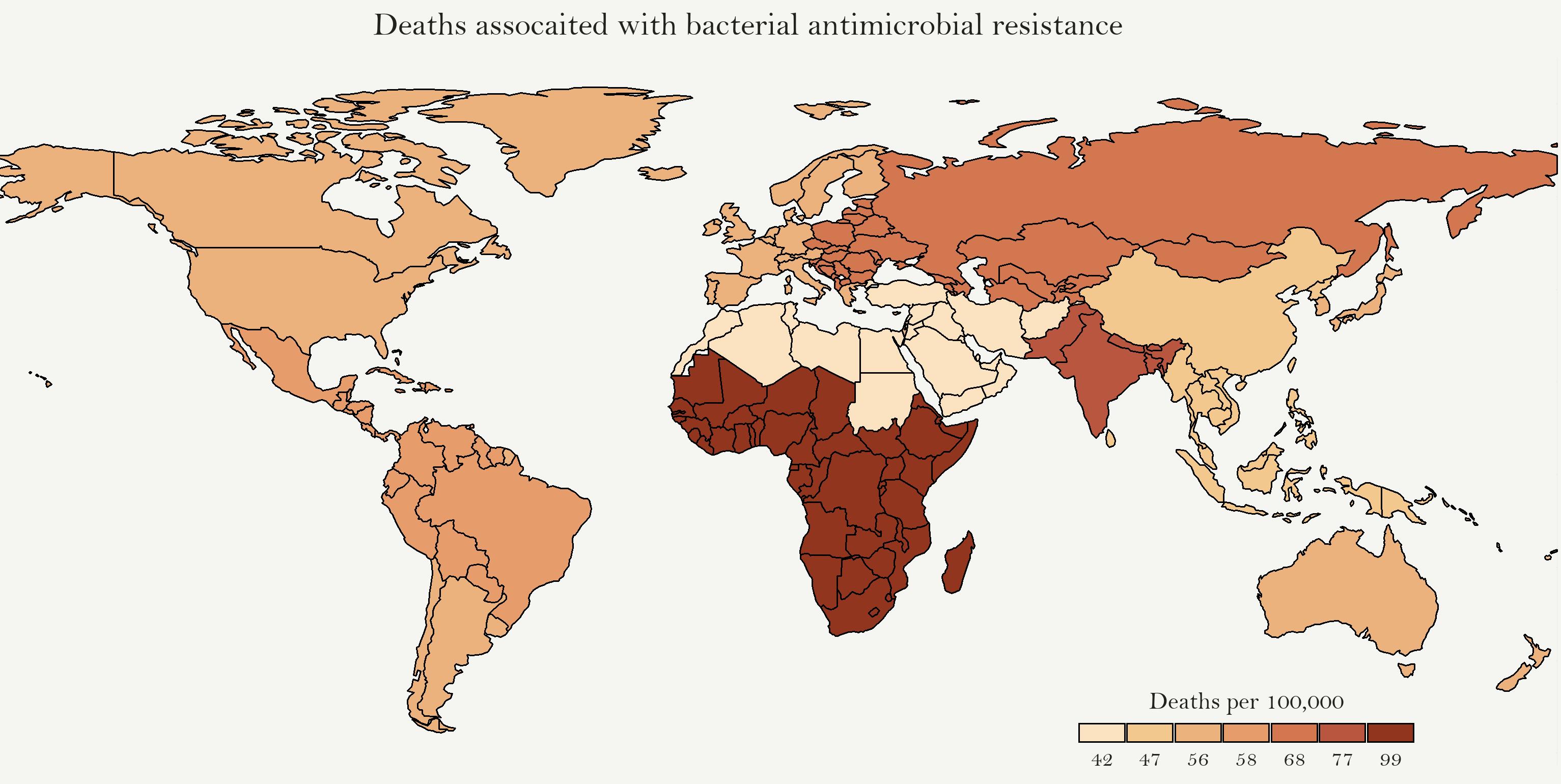
34 Autumn 2022 | eusci.org.uk
Image by Jonathan Morley
research
Like the Borg in Star Trek, microbes are constantly evolving to get past their host’s defences (thankfully they don’t tend to assimilate their hosts into a hive mind). They are becoming resistant to the drugs created to prevent diseases caused by them, and this tactic is far from futile. A recent study in The Lancet estimated that, in 2019, antimicrobial resistance (AMR) led to 4.95 million deaths, 1.27 million of which were directly caused by drug resistant bacteria. In fact, we are
causes a sexually transmitted infection (gonorrhea) which the World Health Organisation (WHO) estimates infects over 200,000 people every day, and half of these infections are caused by antimicrobial resistant strains.
Overuse and misuse are exacerbating the problem. This is particularly the case in low to middle income countries where antimicrobials are easily available as the counter medications. For
Other initiatives to overcome the challenge of AMR are being undertaken at regional and global levels. For a start, the Covid 19 pandemic may present a silver lining in the increased focus it has placed on clean water, sanitation, and hygiene. This awareness will help to slow many infectious diseases and, in turn, reduce the amount of antimicrobial usage.
Most importantly, though, we must raise awareness in communities, health professionals and policy makers globally to prevent the misuse of antimicrobials. For this reason, the Anti microbial Awareness Week
horizon. Upon receiving his Nobel Prize in 1945 for discovering penicillin, Sir Alexander Fleming himself warned of “the danger that the ignorant man may easily underdose himself and by exposing his microbes to non lethal quantities of the drug make them resistant.” Sadly, his words were all too accurate.
By the late 1940s, Staphylococcus aureus (a bacteria that causes skin infections and pneumonia) had already found its way past antimicrobials and was on its way to causing millions of deaths.
“Superbugs” bacteria that are resistant to not just one, but several drugs emerged as antimicrobials became more widely used. The highly infectious Mycobacterium tuberculosis is probably the best known example: in 2020, tuberculosis was responsible for 1.5 million deaths worldwide.
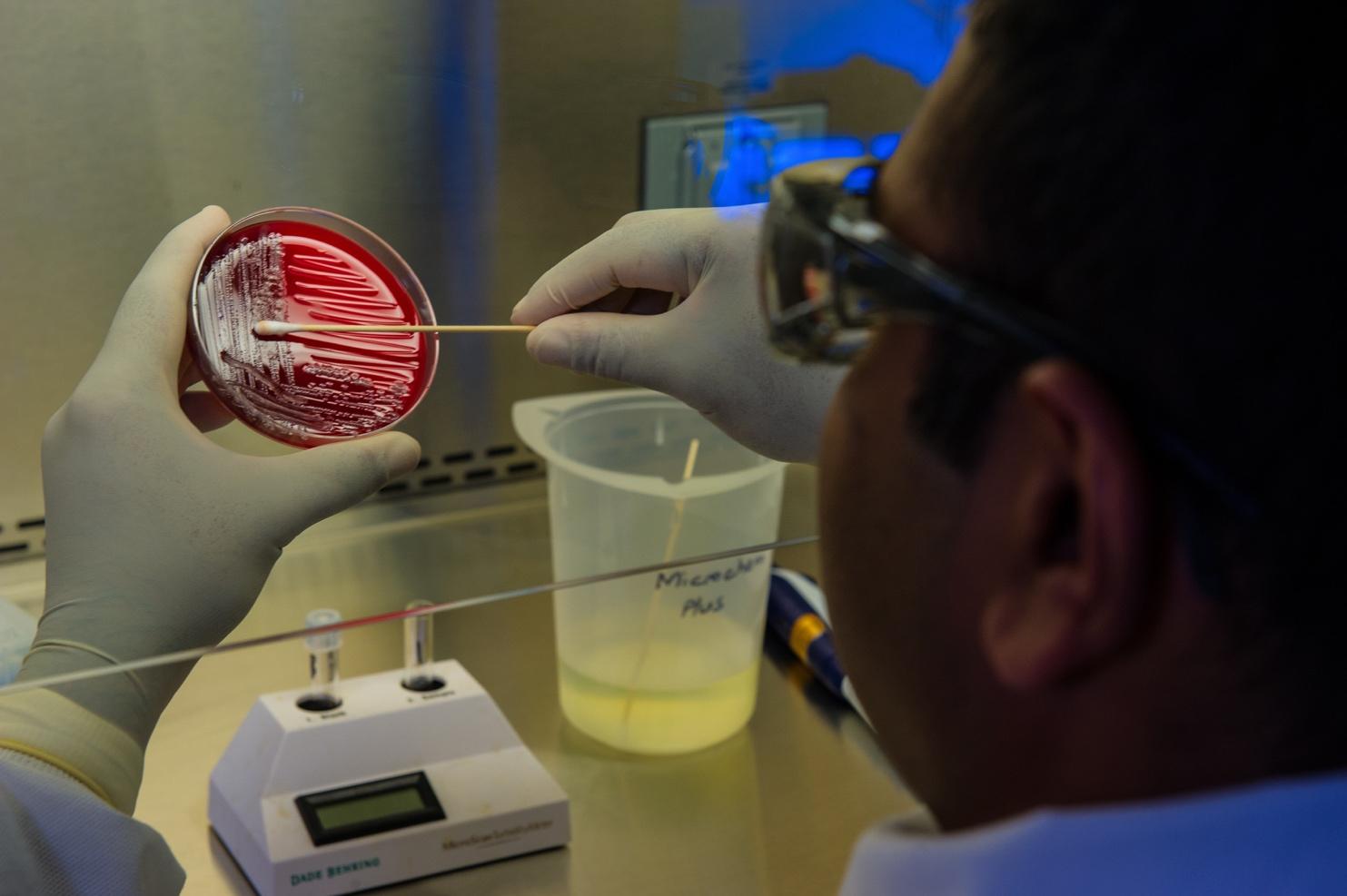
However, you are far more likely to experience the effects of Neisseria gonorrhoeae. This particular superbug
or courses are left unfinished, thus giving microbes additional oppor tunities to develop resistance.
The study highlighted, empo scientific research for the development of vaccines and new antimicrobials is another way to safeguard the future. Breakthroughs such as the first approved vaccine against malaria in October 2021, hold hope for alternative tactics against microbial infections.
The extensive use of antimicrobials in livestock further increases AMR. A report published by the US Food and Drug Admin istration (FDA) revealed that 70% of medically important anti microbials are used for animal husbandry. This is to avoid diseases being passed along the food chain, but many animals are also given antimicrobials to promote growth and prevent infections. In the European Union, the use of antimicrobials as growth promoters is banned. This reduces the amount of antimicrobials consumed uninten tionally in meat and is a good first step that other countries could follow
Superbugs like tuberculosis and gonorrhea are just the tip of the AMR iceberg. Common infections such as pneumonia and foodborne diseases are becoming increasingly challen ging to treat. There is an urgent need to reflect the gravity of the situation by cutting unnecessary antimicrobials in livestock, keeping up the good hygiene measures Covid 19 has taught us, educating ourselves and those around us, and performing urgent research to find better treatments. Perhaps a little Collective thinking wouldn’t be a futile exercise either.
Simar Mann (she/her) is a final year Infectious Diseases student.
Autumn 2022 | eusci.org.uk 35 research
Image by CDC courtesy of Unsplash
“70% of medically important antimicrobials are used for animal husbandry.”
Synthetic “embryos” pave the way for ethical drug screening

Katie Pickup explores how embryonic stem cells could be the key to future drug testing, reducing the ethical concerns raised by animal testing with a cheaper and more reliable method.
Patient safety is essential when testing a new drug. But we don’t often think drugs must also be safe for a developing embryo, since millions of people may be pregnant while on medication. Before drugs reach human clinical trials, they are screened for potential embryonic toxicity, using pregnant animals or human embryos donated from in vitro fertilisation. Both methods are costly, and use of these resources is tightly regulated due to ethical concerns. However, promising scientific advances mean future drugs c tested on synthetic embryo structures grown entirely from stem cells in a lab. This would allow for rigorous screening without the need for animal testing.
In the 1960s, the surrounding a drug called thalidomide brought the devastating effects of embryonic toxicity Thalidomide was prescribed for morning sickness but unforeseen effects on foetal development led to a range of disabilities in over 10,000 babies, many of whom died in infancy. It took five years to be withdrawn from the market and the slow response led to several court cases. Drug testing is more thorough now, yet there are unexpected quirks about thalidomide that helped it slip through the regulatory net.
Any initial drug screening for thalidomide would have used mice. They are useful for studying human development and disease as we share many similarities in physiology and genetics. Sixty years ago, treating pregnant mice with a drug and recording the health of their pups was considered a reliable method of detecting birth defects. Often, results in mice reflect those seen in humans. Not so with thalidomide. The adverse effects on limb formation are species specific: safe for mice, tragically not for humans.
Nowadays, a drug’s effect on
pregnancy must be tested on multiple species, including primates. Such testing is commonly considered unethical due to potential harm inflicted on animals. UK government funded animal research is required to adhere to a principle of “Three Rs”: replacement, reduction, and refinement. This means researchers should avoid using animals where feasible and, if not, use as few as possible to minimise suffering.
these gastruloids have structures resembling early tissue, such as muscle and gut, therefore providing a fascinating insight into the early stages of development. Gastruloids generated from mouse and human stem cells hold huge potential for making human specific predictions without the need for real embryos.
An innovative new study by Dr Naomi Moris and colleagues examined the effects of various drugs on human and mouse gastruloids Many of the drugs were known to be toxic to both embryos, and indeed both gastruloids failed to develop on exposure to these drugs. The also tested thalidomide and found it had very little effect on mouse gastruloids but profoundly he development of human gastruloids. Had this technology been around in the 1960s, these results could have been enough to trigger further investigation into thalidomide before prescribing it to anyone pregnant, potentially saving countless lives.
This is where embryonic stem cells come in. These cells form in the embryo during the first week following fertilisation and can develop into any of the billions of extraordinary cells making up the adult body. Another fascinating property is their ability to self renew almost indefinitely. Human stem cells can be isolated from embryos donated by patients undergoing in vitro fertility treatments, and, because of their self renewal capacity, a vast amount of cells can be grown from a single source.
Scientists have recently been able to exploit stem cells' spectacular property to become any tissue in the body by encouraging them to form lab grown structures resembling early embryos. Though they only grow in culture for around a week,
Testing drugs on gastruloids is yet to be adopted by pharmaceutical companies, but the ability to spot human specific effects without requiring real embryos or animal testing holds huge potential in the drug screening process. As well as being more ethically sound, it’s considerably cheaper and more efficient than animal studies. Gastruloids can be generated hundreds at a time, improving statistical power while using minimal resources. With increasing pressure from animal rights groups and the general public to reduce dependence on animals in research, these simple yet fascinating clusters of stem cells could pave the way to prevent another thalidomide like disaster.
Katie Pickup (she/her) is a 2nd year PhD student specialising in genetics and molecular medicine.
research 36 Autumn 2022 | eusci.org.uk
Image by DrKontogianniIVF courtesy of Pixabay
Every breath you take, every memory you make
Clara Lenherr shows that there is scientific evidence that the way you breathe
can influence your brain's ability to form long term memories and, inadvertently, affect who you are.

Life and breath are intertwined. Breathing provides your cells with the oxygen they need to survive, but breathing is more than a biological force it is intricately linked with our state of mind. The connection between breathing and mental state has been acknowledged for thousands of years, with breath being an important tool in spiritual practices such as meditation and yoga.
Breathing is the only involuntary function in our body that can also be consciously controlled, unlike how fast our heart beats or how quickly we digest our food. Yet, how breathing interacts with brain activity remains poorly understood. Recent studies, however, have shown that as we sleep, our respiratory rhythm regulates the transfer of information across the brain to support the consolidation of memories.
The mechanism of breathing relies on an intricate bundle of neurons embedded at the base of our brains, in the medulla. Neurons that fire at a regular pace control the contraction and relaxation of muscles surrounding the lungs to regulate inhalation and exhalation. In turn, air flows through the nose and stimulates sensory neurons that send signals up to the brain, thereby affecting neural activity.
The pathway in charge of our sense of smell overlaps with the emotion centre which is also intertwined with the memory centre in the brain. Could breathing therefore influence our emotions and memory? Nikolaos Karalis and Anton Sirota, both at the Ludwig Maximilian University in Munich, set out to test this.
The scientists recorded electrical activity in different brain regions and the breathing rate of mice. While different states of wakefulness affected breathing rate (slower
breathing during sleep, for example), the frequency of activity in the prefrontal cortex, at the front of the brain, was found to mirror the frequency of breathing during all states. Thus, breathing continuously modulates brain activity in the region responsible for complex behaviours.
cortical oscillations, this is the first time that an underlying mechanism has been identified.
The results show that the rhythm of breathing likely coordinates the transfer of information to long term storage during sleep. Since the integration of new memories into our
The researchers focused on the poorly understood state of sleep when communication between brain regions via brain waves is abundant. Brain waves are rhythmic patterns of activity generated by groups of neurons that are thought to enable information transfer across the brain. The researchers found that the majority of neurons fired in sync with the respiratory cycle, usually firing just as the mice breathed in. Having established a relationship between the rhythm of breathing, brain waves, and neuron activity in the prefrontal cortex, they wanted to see if this persisted in other brain regions.
During sleep, memories are thought to be transferred from the hippocampus to long term storage in the cortex. The authors of the study found that breathing is synchronised with activity between these two brain regions. Although neuroscientists have previously demonstrated a correlation between hippocampal and
Clara Lenherr (she/her) is a neuroscience Master’s student pursuing research into the mechanisms of neural plasticity and computation that underlie learning and memory.
(Twitter: @Lenherr_C) She hosts a podcast called Neuroverse available on Spotify, Apple podcasts, and at neuroversecc.wixsite.com/podcast
existing frame of mind influences our sense of self and ultimately our experience of being, the newfound role of breathing rhythm in regulating this process highlights how both our brains and ourselves are synchronised to the rhythm of life.
These important findings provide further support for mechanistic theories of information flow and memory consolidation. While this study focused on the sleep state, the continuous modulation of brain activity by breathing during wakefulness may further modulate perception and emotion processing. In support of the Yogis and Buddhist practitioners that have long honoured the power of breath as a tool for enhancing our minds, breathing does appear to be an undercurrent beneath the flow of information that encodes our internal state. It will be fascinating to see how a better neuroscientific understanding of this perennial rhythm can be harnessed to modify mental states in the future. Or perhaps the Yogis beat us neuroscientists to it.
research Autumn 2022 | eusci.org.uk 37
Illustration by Aisling Fairweather
Inside the jaws of the tyrant king
You wouldn’t want to come face to face with a Tyrannosaurus rex. A skull over a metre and a half in length, bone crushing jaws lined with railroad spike teeth, and enormous eyes that stare forward toward anyone unlucky enough to fall under its gaze. A team led by Florian Bouabdellah, a graduate of the University of Montpellier, got a good close up of the jaws of a T. rex. Fortunately for them, this wasn’t a living T. rex but instead a digital restoration of a fossil skull generated using cutting edge technology at the University of Witwatersrand in Johannesburg.
Digitally reconstructing fossils has revolutionised palaeontology. By processing over a thousand CT scans of a fossil T. rex skull, 3D models can be generated using state of the art software. The models allow scientists to see the insides of fossils by simply moving them about and editing them on a computer. They also allow visualisation of soft tissues such as sinus cavities, the brain, and even bony canals in which blood vessels and nerves are embedded to supply organs. The team of scientists used these same techniques to get a detailed depiction of three major canals that run through the jaws in order to better understand the anatomy of T. rex, how sensitive the snout was, and whether the beast had fleshy lips covering its formidable teeth.
T. rex had the same three bony canals we have in our faces, a result of our common ancestry dating back over 300 million years. The first canal runs around the eyes, the second
travels across the upper jaw, and the third passes through the lower jaw. These canals house blood vessels and the trigeminal nerve which emerges from the back of the brain and splits into three parts, each division dedicated to one of these bony canals. The trigeminal nerve transmits signals that flex face muscles as well as sensations of touch and pain to the brain.
The scientists discovered some unique quirks of the canals of T. rex. All three canals split into an extraordinary number of branches all over the jaws so they can supply those powerful crunching muscles, acute sensory organs, and possibly even colourful skin with sufficient blood and nerve endings. The branching around the roots of the terrifying teeth is especially intense, indicating a large amount of nutrients and energy were dedicated to sustaining the growth of new teeth throughout the lifetime of the animal. The majority of the canals and their branches are clear in the 3D model the scientists generated, but there is ambiguity as to the branches within the tip of the snout. At the moment, it’s a mystery which of the three canals these branches originate from.
Modern crocodiles have astounding facial sensitivity that allows them to detect the subtlest of disturbances to the water they ambush in. Previously, it had been suggested that carnivorous dinosaurs like T. rex had similar facial sensitivity. By combining results from their own research and reviewing the research of others, the
team led by Bouabdellah concluded that while carnivorous dinosaurs had dense canal branching, it still wasn’t as intense as that of crocodiles. From this conclusion, they inferred that most carnivorous dinosaurs, including T. rex, likely didn’t have facial sensitivity equivalent to that of crocodiles.

Determining the presence of lips in dinosaurs has historically been challenging since lips don’t fossilise. Previous research attempted to use the canal branching patterns in dinosaurs as evidence for lips, but Bouabdellah and their colleagues disagree with this. They instead point out issues with this reasoning, such as not considering the beaks of many dinosaurs, and suggest that we simply can’t make any firm conclusions about lips on dinosaurs as we currently don’t have any data or methods which would provide an end to this palaeo puzzle.
This new insight into T. rex expands our knowledge of its anatomy and lifestyle. Further research could uncover more about the biology of T. rex, and we need to scan and create more 3D models of various types of dinosaurs if we are to better understand their evolution of sensory organs and soft tissues. It’s this kind of exciting research that changes the way we think of dinosaurs, from terrifying monsters to living, breathing animals.
Hady George (He/Him) is a student currently studying a MScR in Palaeontology and Geobiology.
With 3D models revealing new secrets, Hady George explores how this cutting edge technology will expand our knowledge of the appearance and behaviour of the formidable Tyrannosaurus rex
research 38 Autumn 2022 | eusci.org.uk
Image by Freya Aylward
Your brain’s natural calorie counter
Clara Lenherr tells the story of how digging up decade old data led researchers to discover how the brain tells you it’s time to stop eating.
The desire to consume food is one of the most primitive, universal, and powerful behaviors driving humans and animals alike. We rely on our ability to sense how satiated we are in order to regulate the amount of food we eat, and an imbalance in our sense of hunger can lead to overeating and obesity, a disorder that is becoming increasingly prevalent worldwide.
An international team of researchers recently discovered that the cerebellum (a brain region traditionally known for controlling movement) is involved in regulating food intake. The findings shed light on this seemingly underestimated region as a new target for therapies to treat insatiable hunger.
Led by Dr Nicholas Betley (University of Pennsylvania) and Dr Albert I. Chen (Scintillon Institute), the team published their results in Nature in November 2021. The paper showed a subset of neurons in the deep cerebellum are activated in response to food intake.
Cerebellar neurons responded to food by increasing the release of the “reward neurotransmitter'', dopa mine, in a region deep within the brain. An increase in dopamine decreases the significance of later food induced dopamine spikes, so the reward value of food diminishes along with the desire to consume it. This cerebellar circuit therefore controls
the reward value of food to regulate how much of it we consume.
An insatiable appetite is one symptom of Prader Willi syndrome, a rare genetic disorder which can lead to life threatening overeating and obesity. The role of the cerebellum in hunger was first suspected when a rare set of neuroimaging (fMRI) data tracking blood flow in the brains of Prader Willi syndrome patients was re investigated after almost a decade.
The data unexpectedly revealed the deep cerebellum was the only brain region with significant differences in activity between controls and Prader Willi patients. A lack of cerebellar activity in response to food cues was detected in patients experiencing insatiable hunger, calling for further investigation into the underlying mechanisms of the cerebellum.
The researchers studied mice to determine the precise cerebellar region activated by food intake. They carried out gene expression profiling and monitored brain activity in response to food to reveal that a discrete population of neurons in the anterior deep cerebellar nuclei (aDCN) became active in response to food intake.
Moreover, artificially inducing activity in aDCN neurons caused mice to consume less food. When animals were given food of different caloric
densities, they adjusted the quantity of food consumed to obtain an equal number of calories overall. Together, these findings show the activity of aDCN neurons controls eating in a calorie dependent manner.
The researchers tried activating both the aDCN neurons and the hypothalamus, a part of the brain known to regulate hunger according to need. While activation of the hypothalamus alone increased the amount of food the mice ate, activating both parts at the same time didn’t have the same effect. This demonstrated the cerebellum can override the hypothalamus.
The cerebellar neurons worked by reducing the reward value of food, making every mouthful less satisfying than the last. Activating the aDCN neurons led to a sustained release of dopamine, which strongly decreased food intake. Dopamine bursts normally occur after eating, but following cerebellar activation, the base level of dopamine was increased, meaning any spikes from further eating made less of a difference.
Image (courtesy of Dr. Aloysius Low, lead author) depicting the neural circuit from the gut to the anterior cerebellum and downstream striatum. Food intake leads to the activation of the anterior cerebellum and consequent release of dopamine in the striatum, which signals that sufficient calories have been consumed to terminate food consumption.

The finding that aDCN neurons tell the body when it is time to stop eating greatly expands our understanding of how dopamine is used as a reward, and already has significant clinical implications for the treatment of eating disorders. The approach of the study (beginning with data from human patients followed by experiments in mice) was also remarkable in its somewhat “backwards” approach compared to many studies.
Dr Betley’s lab has been investigating neural circuits that regulate food intake for several years, but this finding is most likely to lead to obesity treatments. Importantly, this study showed the mice that underwent aDCN activation did not compensate by eating more food later on. This makes it particularly attractive as a therapeutic target to control the desire for food.
With the right research, perhaps it will not be too long before brain stimulation of the deep cerebellum is used to cure extreme hunger in Prader Willi syndrome patients and help reduce obesity.
Clara Lenherr is a Neuroscience Master’s student and one of the contributing authors of the study. Find her on Twitter @Lenherr_C
research Autumn 2022 | eusci.org.uk 39
Scottish coast mapped for seagrass suitability
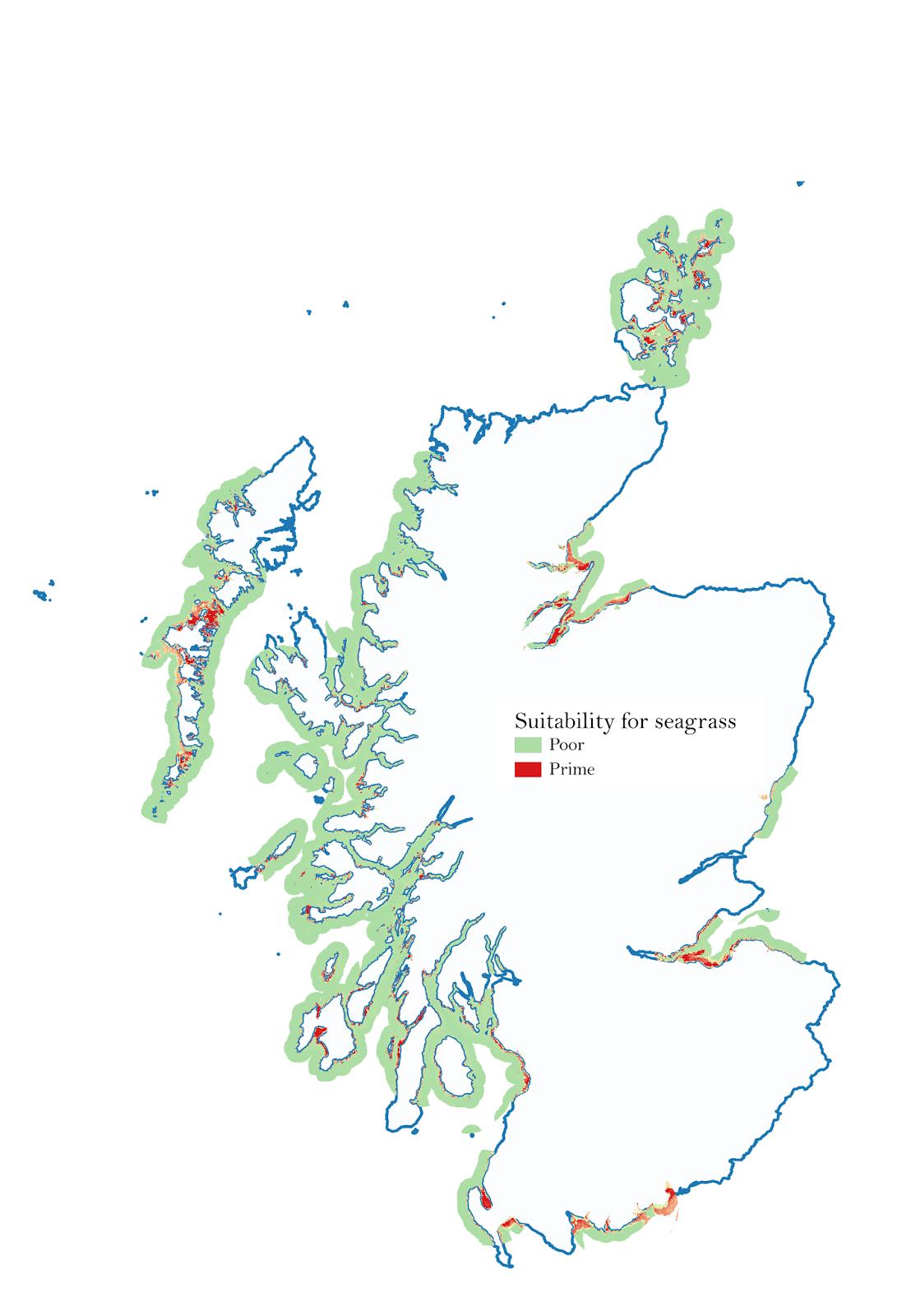
Le Huang studies the best environments for seagrass and how readers can get involved in helping to further study these fascinating and important plants.
Seagrass beds are a priority for conservation as they provide an assortment of ecosystem services. For example, seagrass prevents coastal erosion, provides habitats for marine organisms, and is a significant sink of blue carbon (carbon stored in ocean and coastal ecosystems). In fact, seagrass beds can sequester more carbon per unit area than terrestrial forests, thus playing an important role in mitigating climate change.
However, European seagrass beds have suffered dramatic losses from seagrass wasting disease (associated with the pathogen Labyrinthula zosterae). In addition, other factors such as coastal development, pollution, and climate change are also likely to threaten seagrass beds in the future. According to the Marine Life Information Network portal, seagrass beds are moderately sensitive to global warming, marine heatwaves, and sea level rise.
research 40 Autumn 2022 | eusci.org.uk Image by Le Huang
Subtidal seagrass beds in Scotland are located within six nautical miles from shore and are dominated by a species known as the common eelgrass (Zostera marina). Given their inshore location, Z. marina meadows can be easily spotted by scuba divers. An ocean lover diving in European coastal zones may be fortunate enough to come across the scene of “underwater grasslands” composed of seagrass meadows, featuring numerous dark green, ribbon like leaves and inhabited by diverse creatures.
The distribution of seagrasses in the ocean floor is not random, but dependent on numerous factors. Firstly, in order to survive, seagrasses require sufficient light for photo synthesis. As a result, they are usually
limited within the depth of 10 meters (for Z. marina).
Wave exposure also drives the distribution of seagrasses. As well as causing physical harm to the seagrass leaves and rhizomes (underground stems), strong waves mix sediments into the water, which can block their light. Furthermore, wavy areas tend to have coarser sediments which have lower nutrient concentrations. Patchy meadows and seedlings are especially sensitive to powerful waves due to their lack of extensive rhizome systems.
Since seagrasses need to anchor themselves to the seafloor, slope and sediment roughness are also important. Steep slopes and hard rocks are not conducive to the anchoring of seagrass roots. Instead, seagrasses usually prefer soft sediments like muds and sands, which are also abundant in nutrients.
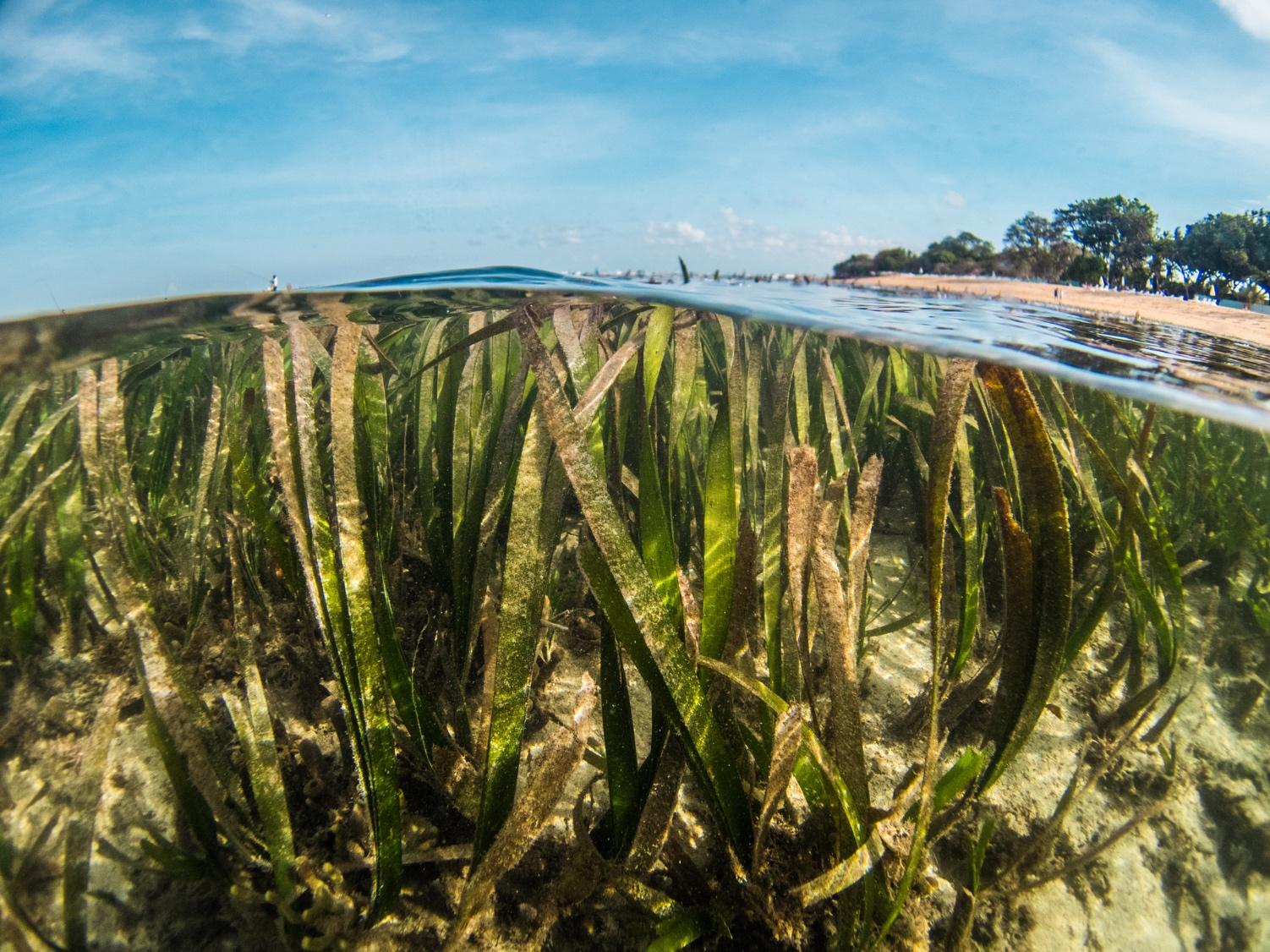
In a nutshell, seagrasses show a preference towards shallow, sheltered waters with gentle slopes and soft sediments. With these factors in mind, we rated Scottish waters for seagrass suitability. Starting off with records of seagrass presence and environmental datasets, we built a model predicting how suitable a certain location would be for seagrass and used this to map the Scottish coastline.
The more data becomes available, the better maps like this will become. You can contribute yourself via the Seagrass Spotter App This platform belongs to Project Seagrass and encourages the public to submit sighting photos of seagrasses and their locations through a mobile application or online websites.
Head to seagrassspotter.org to find out more.
Le Huang (she/her) worked with NatureScot to do this research as part of her Master’s in marine systems and policies.
research Autumn 2022 | eusci.org.uk 41
“ S eagrass beds can sequester more carbon per unit area than terrestrial forests ”
Image by Benjamin Jones courtesy of Unsplash

tangents 42 Autumn 2022 | eusci.org.uk
Meet the team
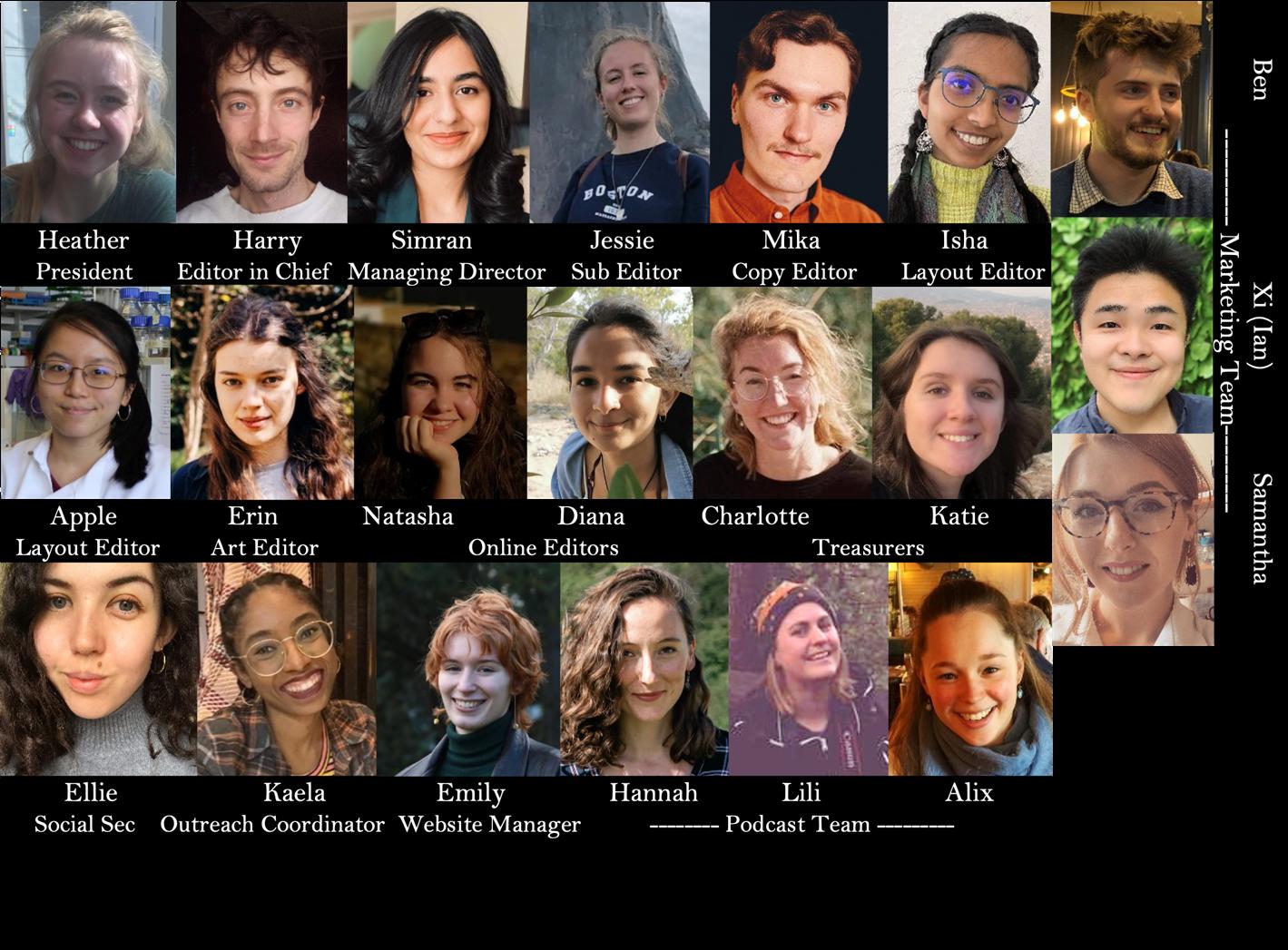
SciencEd is written, edited and illustrated by volunteers.
If you want to support us, you can donate towards the printing cost of this magazine using this QR code.

Note you must not be signed in as a student on EUSA.
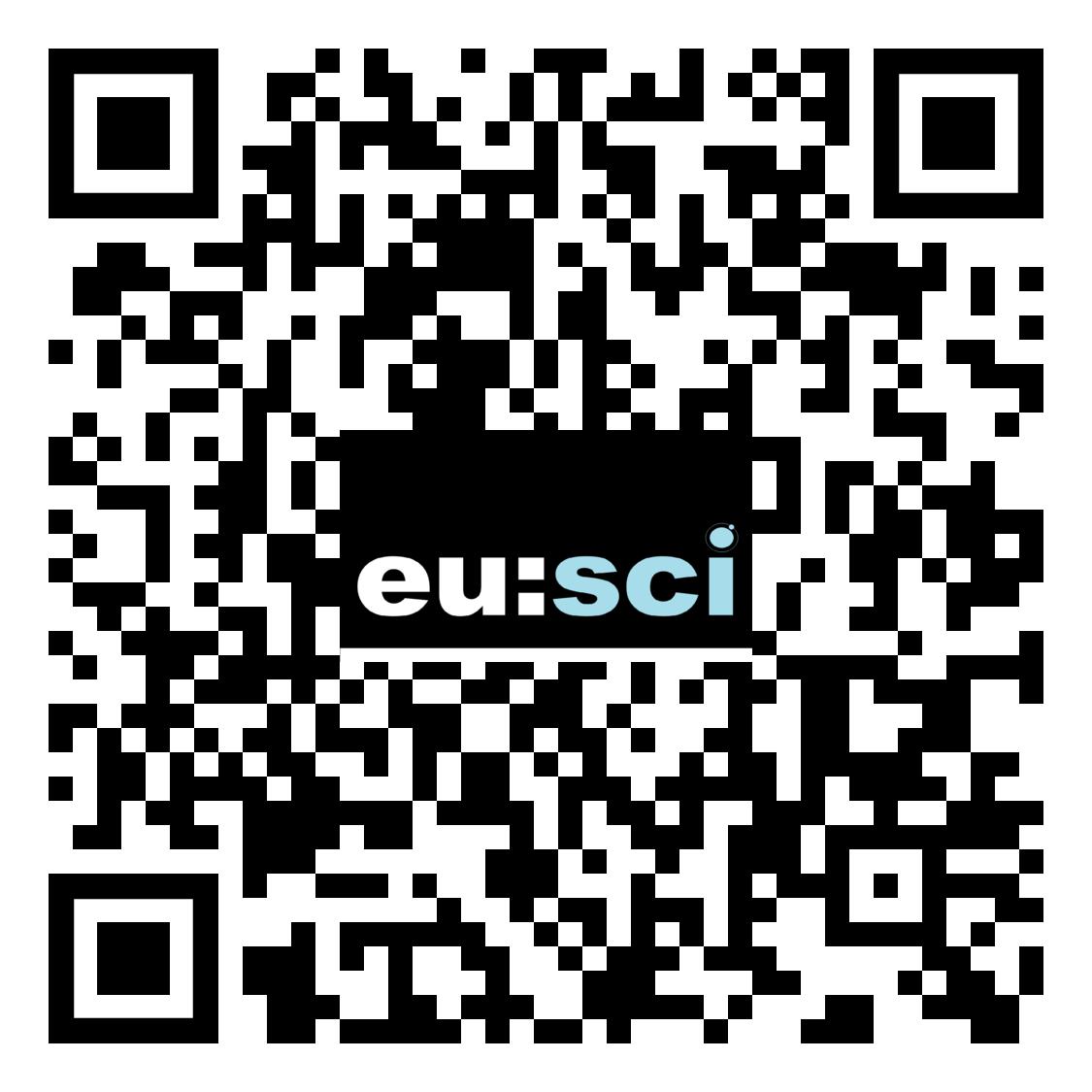 + writers Emma Nance, Alkisti Kallinikou, Hady George, Clara Lenherr, Le Huang, Lara Watson, Alice Drinkwater, Jason Segall, Matilda Brown, Millie Chambers, Andrew Twelves, Nathan Rockley, Rachel Westphal, Clodagh Aherne, Marie Louise Wohrle, Madison MacLeay, Tanja Holc, Christian Donohue, Jacob Smith, and Louisa Drake
+ editors Maya Maxwell, Elizabeth Orhadje, Sarah MacManus, Jesse Wise, Hristina Gyurova, Kevin Boyle, Paige DePolo, Katie Dubarry, and Arthur Erb
+ writers Emma Nance, Alkisti Kallinikou, Hady George, Clara Lenherr, Le Huang, Lara Watson, Alice Drinkwater, Jason Segall, Matilda Brown, Millie Chambers, Andrew Twelves, Nathan Rockley, Rachel Westphal, Clodagh Aherne, Marie Louise Wohrle, Madison MacLeay, Tanja Holc, Christian Donohue, Jacob Smith, and Louisa Drake
+ editors Maya Maxwell, Elizabeth Orhadje, Sarah MacManus, Jesse Wise, Hristina Gyurova, Kevin Boyle, Paige DePolo, Katie Dubarry, and Arthur Erb
Join our mailing list to stay up to date with the latest opportunities
+illustrators Yen Peng (Apple) Chew, Aisling Fairweather, Freya Aylward, Lydia Hunt, Alyssa Brandt
Autumn 2022 | eusci.org.uk 43
EUSci committee 2021/22
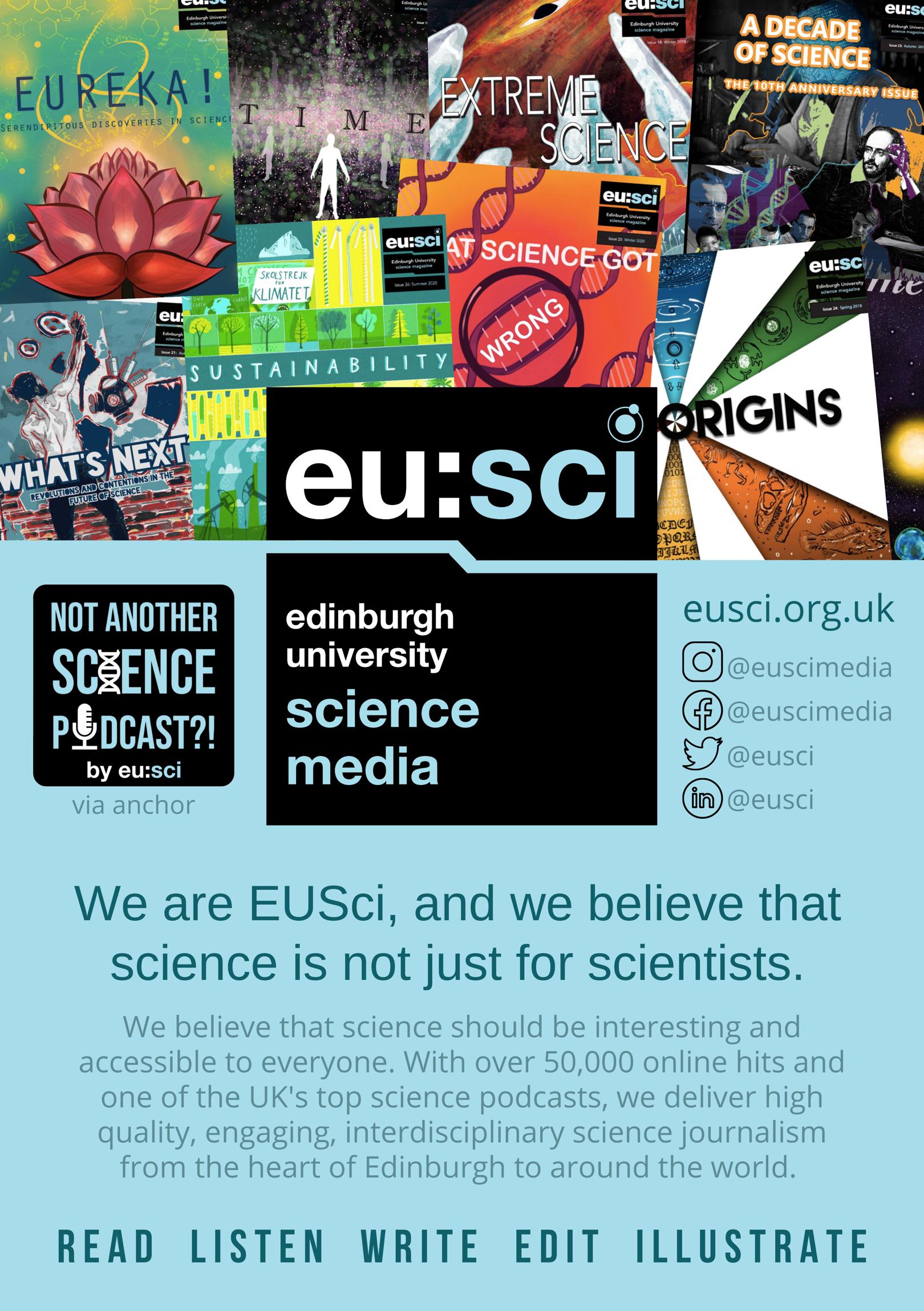








 Harry Carstairs EditorinChief2021/2022
Harry Carstairs EditorinChief2021/2022





 Ellie Dempsey
Ellie Dempsey

























































 + writers Emma Nance, Alkisti Kallinikou, Hady George, Clara Lenherr, Le Huang, Lara Watson, Alice Drinkwater, Jason Segall, Matilda Brown, Millie Chambers, Andrew Twelves, Nathan Rockley, Rachel Westphal, Clodagh Aherne, Marie Louise Wohrle, Madison MacLeay, Tanja Holc, Christian Donohue, Jacob Smith, and Louisa Drake
+ editors Maya Maxwell, Elizabeth Orhadje, Sarah MacManus, Jesse Wise, Hristina Gyurova, Kevin Boyle, Paige DePolo, Katie Dubarry, and Arthur Erb
+ writers Emma Nance, Alkisti Kallinikou, Hady George, Clara Lenherr, Le Huang, Lara Watson, Alice Drinkwater, Jason Segall, Matilda Brown, Millie Chambers, Andrew Twelves, Nathan Rockley, Rachel Westphal, Clodagh Aherne, Marie Louise Wohrle, Madison MacLeay, Tanja Holc, Christian Donohue, Jacob Smith, and Louisa Drake
+ editors Maya Maxwell, Elizabeth Orhadje, Sarah MacManus, Jesse Wise, Hristina Gyurova, Kevin Boyle, Paige DePolo, Katie Dubarry, and Arthur Erb
